Music is the universal language
“Glory to God in the highest heaven, and on earth peace to those on whom his favor rests.” - Luke 2:14
General Interest
System of a Down's Daron Malakian Rig Rundown
The metal giants return to the stage with a show powered by gold-and-black axes and pure tube power.
Except for two new singles in 2020, alt-metal icons System of a Down haven’t released new music in 20 years. But luckily for their fans, System—vocalist Serj Tankian, guitarist/vocalist Daron Malakian, bassist Shavo Odadjian, and drummer John Dolmayan—took their catalog of era-defining, genre-changing hard-rock haymakers on tour this year across South and North America.
PG’s Chris Kies connected with Malakian onstage at Soldier Field in Chicago ahead of System’s second show at the football stadium. Malakian and his tech, Patrick Lachman, explained how some color-coded Gibson, Ibanez, and Friedman gear give Malakian the fire he needs to burn through the band’s legendary set.
Brought to you by D’Addario.
SG With SDs
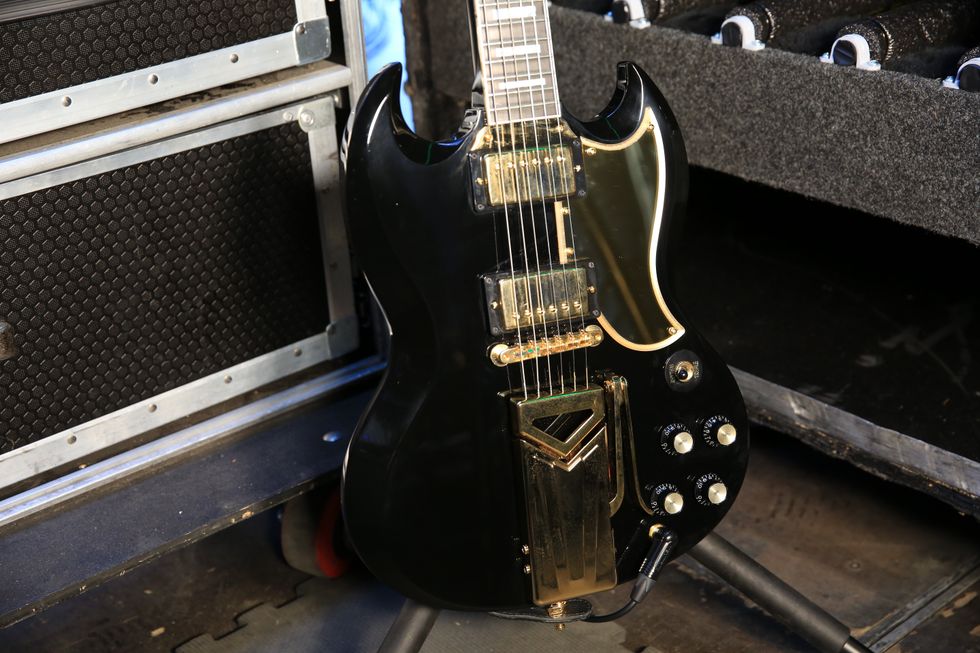
This Gibson SG is brand new and “hot off the presses,” per Malakian’s tech, Lachman. Built in Gibson’s Custom Shop, it’s got Seymour Duncan Custom Shop pickups. On this run, he starts shows on this guitar, and will typically switch things up after about 10 songs.
Malakian plays custom, extra-pointy Dunlop picks, and runs all his axes with a custom set of Ernie Ball strings (.010–0.50). System’s catalog, and therefore Malakian’s guitars, are predominantly in drop-C tuning.
Freeze!
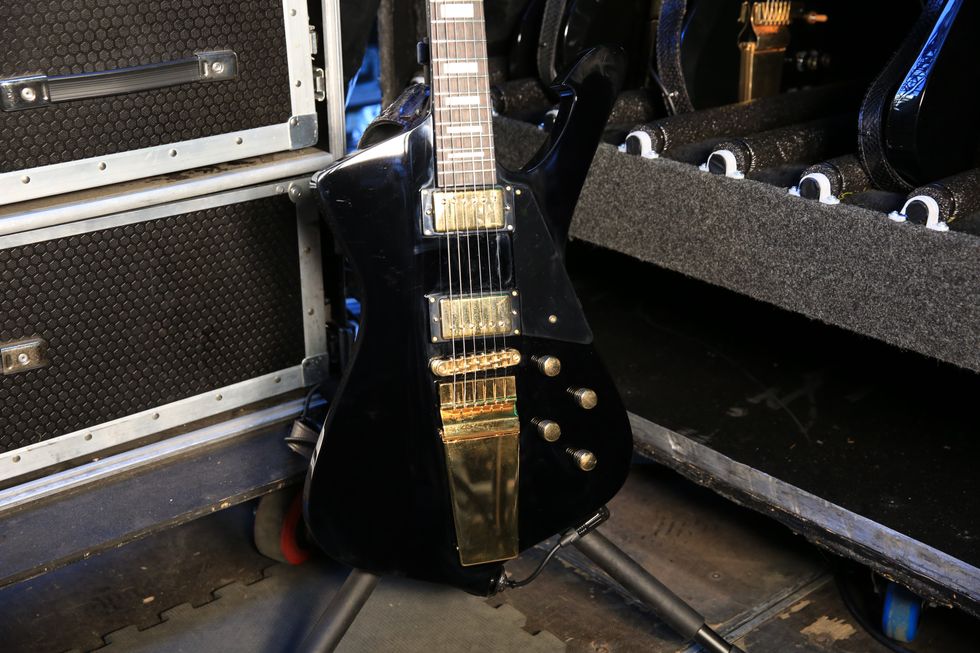
Next up during the set, Malakian will turn to his iconic Ibanez Iceman, one of his most heavily leaned-upon toys during this tour. This one has black “secret ninja binding,” his tech quips, virtually invisible to all but Malakian. It’s wired with Seymour Duncan Custom Shop Pearly Gates pickups.
B.Y.O.V.
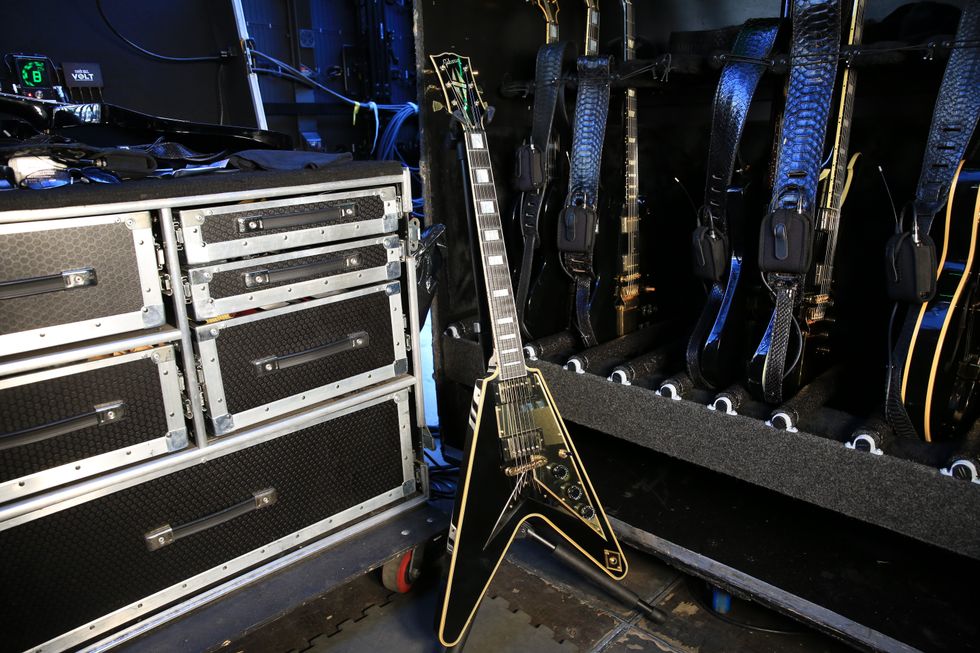
Malakian always liked how Albert King’s Flying V looked with its Les Paul-style headstock, so when Gibson was making him a V, he requested that it be outfitted with the same look. This one’s rocking a pair of Seymour Duncan Saturday Night Special pickups.
Semi-Hollow Star
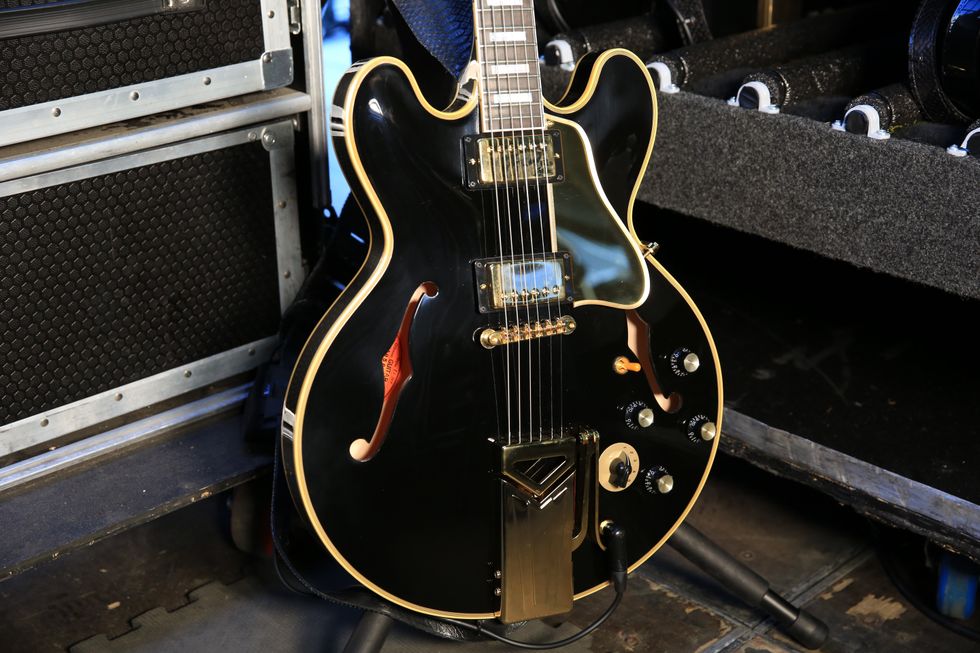
This Gibson ES-335, dressed in the same black-and-gold scheme as all of Malakian’s guitars, also came fresh from the Custom Shop for this run of shows.
Old and New, All Tube
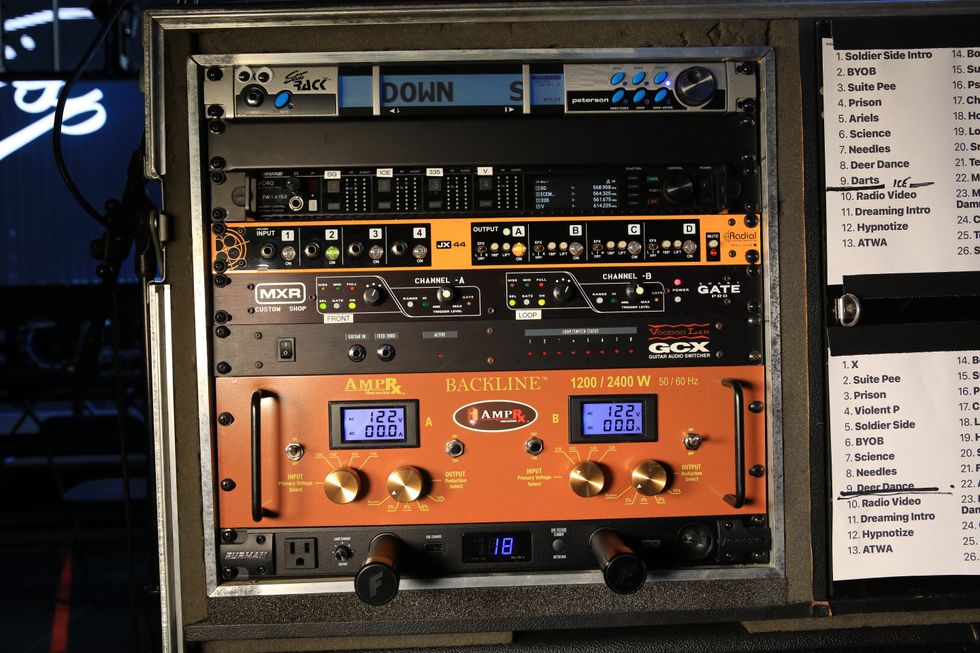
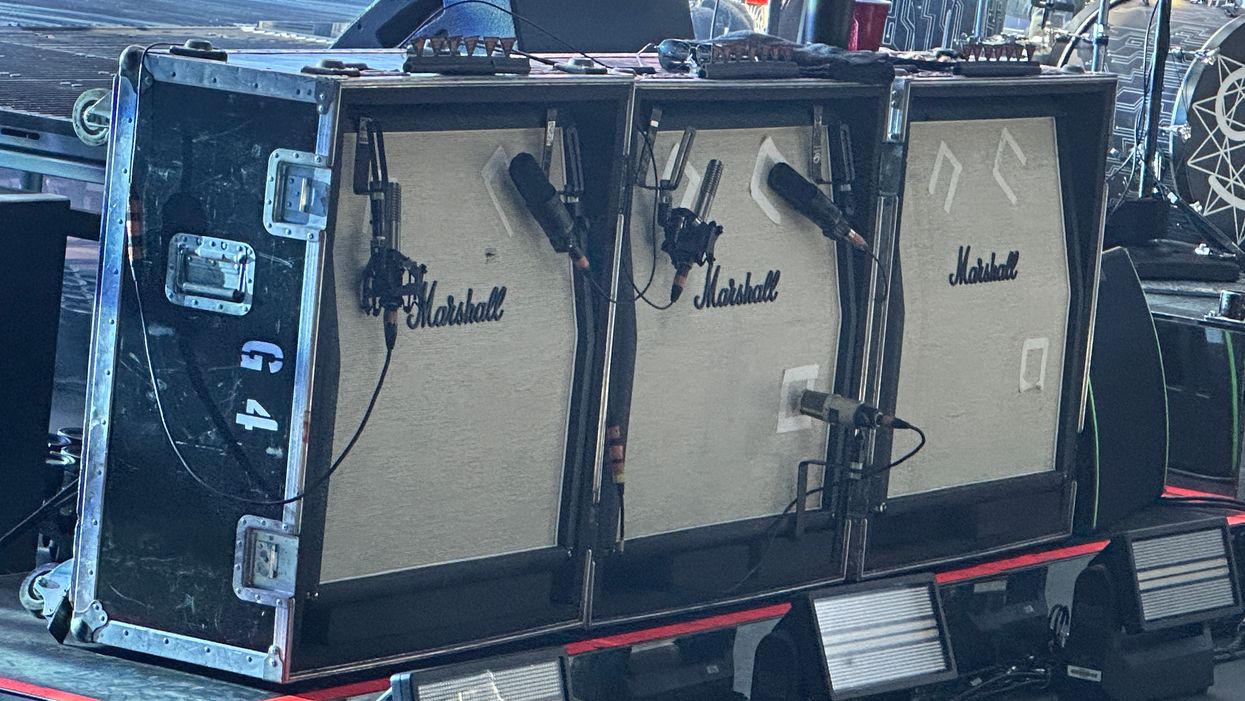
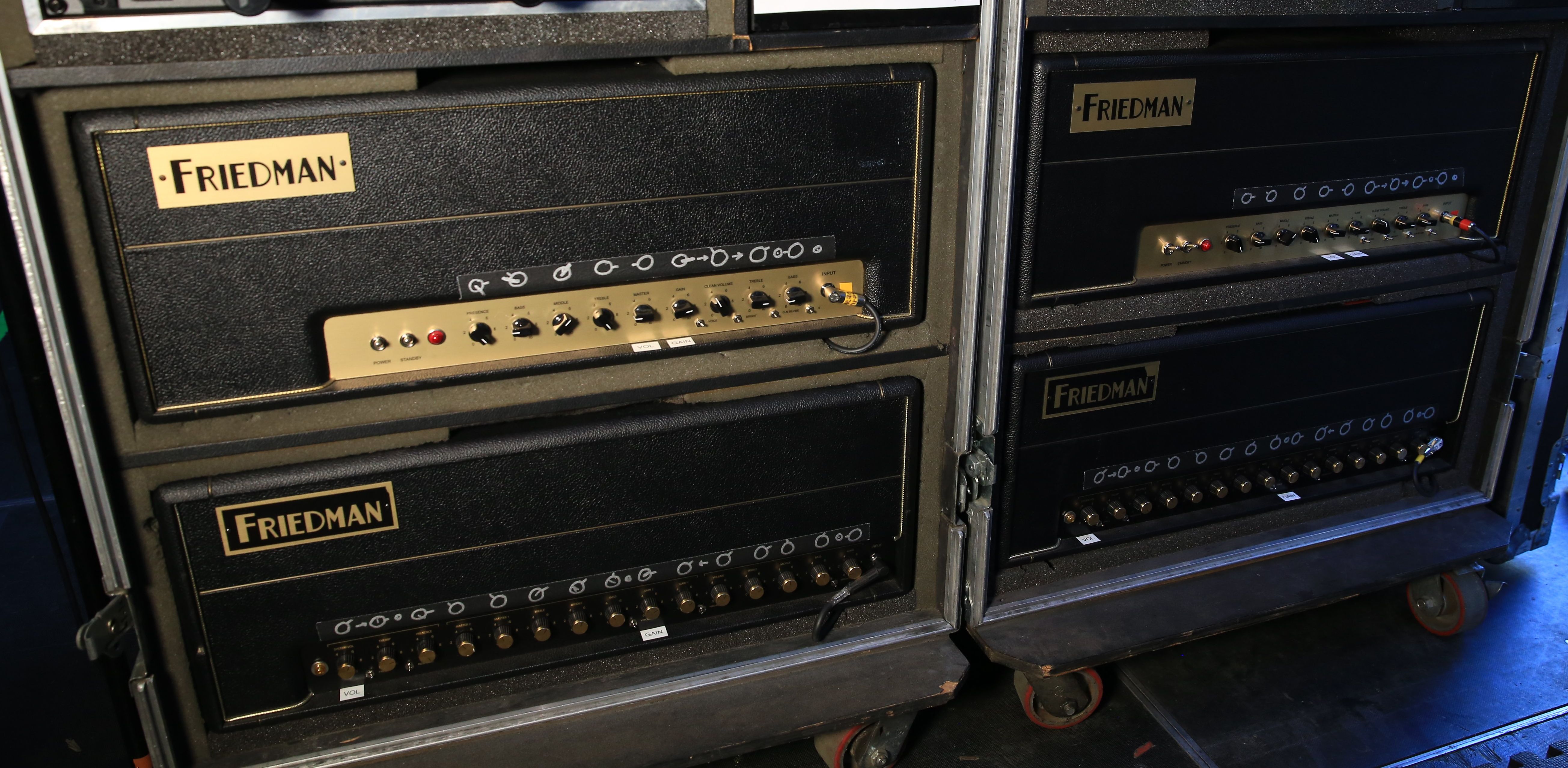
Malakian doesn’t have anything against modeling technology, but he prefers to keep things old-school. He runs two generations of Friedman BE-100 heads at the same time: The newer BE-100 Deluxe head (below) is used for dirty tones, while the first-gen BE-100 (above) stays dialed for cleans. They’re connected to two Marshall 4x12 cabinets onstage, dedicated to either the clean or overdriven signals. The speakers are Celestion G12M-70s.
Loaded onto Malakian’s rack above the amp heads are a Shure AD4Q, Radial JX 44, MXR Smart Gate Pro, Voodoo Lab GCX, AmpRx Backline, and Furman PL-Pro DMC.
Daron Malakian’s Pedalboard
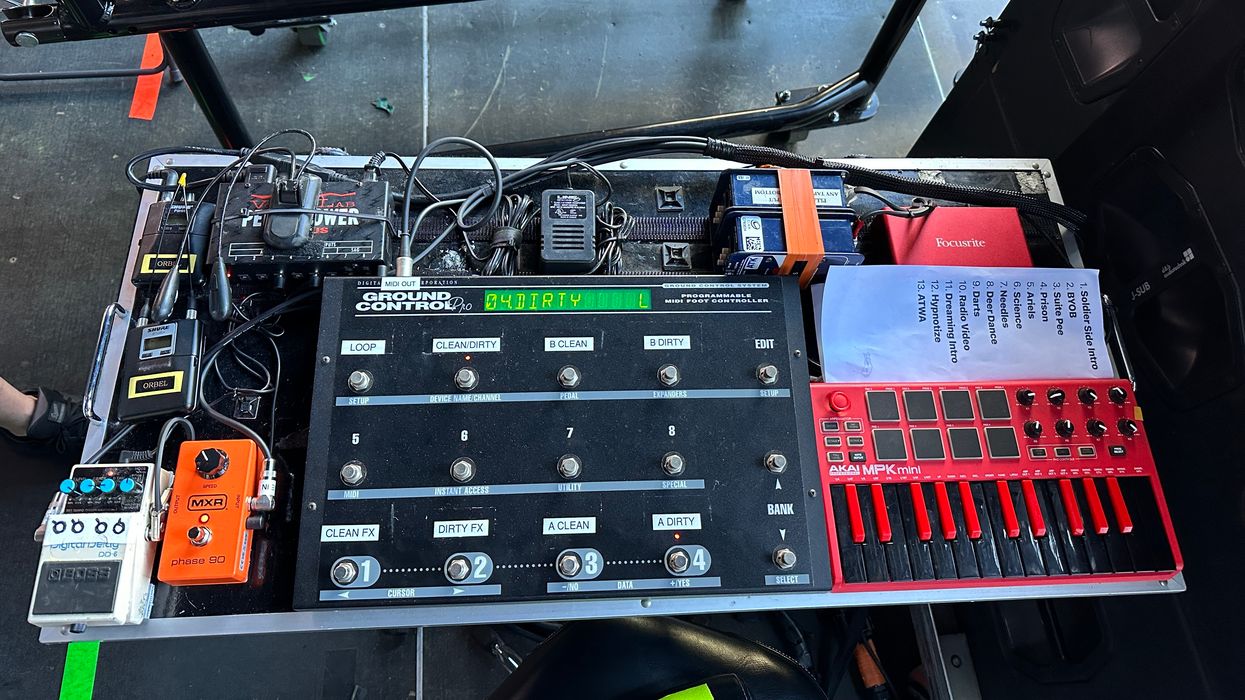
Malakian’s switching is handled backstage by his Scars on Broadway bandmate Orbel Babayan via this board. In addition to a Voodoo Lab Ground Control Pro switcher, Akai MPK Mini, and Scarlett Focusrite interface, the board is dead simple, with just an MXR Phase 90 and Boss DD-6 delay. No dirt pedals needed; all Malakian’s drive comes from the Friedman. A Voodoo Lab Pedal Power 2 Plus fires up the affair.

Ernie Ball Custom Set (.010-0.50)
Gretsch guitar given away by Jimmy Page for an NME competition sells for £100,000 at auction – over 3x its estimate

You might remember hearing in July about the Jimmy Page-owned 1957 Gretsch Chet Atkins 6120 that was headed to the auction block.
As the story goes, the guitar – bought by Page in Nashville in 1972 for £200 – was given away by the Led Zeppelin legend as part of a 1974 competition hosted by our sister title NME.
The competition – titled ‘Win Jimmy Page’s Own Guitar’ – featured the electric guitar as a prize, and that magazine edition featured a photo of Page holding the instrument like a cricket bat.
After passing through the hands of several owners since leaving Jimmy Page’s following that competition, news broke in July that the guitar was heading for auction via Corsham, England-based auctioneer Gardiner Houlgate.
While experts predicted it would sell for somewhere between £30,000 and £50,000, the guitar has smashed that figure, selling yesterday (9 September) for a princely £100,000 (approx. $135,536).
 Credit: Gardiner Houlgate
Credit: Gardiner Houlgate
Gardiner Houlgate auctioneer Luke Hobbs says the sale was a “fantastic result that exceeded all expectations”, and that the guitar “fiercely contested by collectors worldwide, with bids coming in via both telephone and internet”.
“It was a true privilege to offer an ex-Jimmy Page guitar,” Hobbs continues. “Of all the artist-associated instruments I’ve been involved with, this has been my favorite journey, both for the remarkable story behind it and the rarity of the artist. Above all, I am delighted for the family.”
The winner of the 1974 NME competition was Charles Reid of Hornsey, north London. At the time, Reid was quoted as saying, “Page must be mental giving away such a terrific guitar as this. It’s the kind of instrument that every guitar player dreams of owning but can never really afford.”
After owning the Gretsch for over 15 years, Reid sold it to Phil O’Donoghue of Chessington, Surrey in 1990 for £2,000. The guitar remained with O’Donoghue until his death earlier this year, and the latest Gardiner Houlgate auction is the result of it being sold by his family.
Also part of that auction was a Burns Double Six 12-string guitar “borrowed” by Mark Knopfler for 50 years and used on classic Dire Straits album Communiqué, which accurately sold for its estimate at £30,000.
 Credit: Gardiner Houlgate
Credit: Gardiner Houlgate
Learn more about the sale at Gardiner Houlgate.
The post Gretsch guitar given away by Jimmy Page for an NME competition sells for £100,000 at auction – over 3x its estimate appeared first on Guitar.com | All Things Guitar.
Reverb UK relaunches with lower seller fees and smarter selling features

Reverb has announced the relaunch of Reverb UK, complete with lower selling fees and new tools for sellers.
Sellers will now pay a flat, “all-in” 5% fee on every sale – down 3% from before. For the hundreds of UK-based music shops and thousands of individual musicians who rely on Reverb, that drop means more money back in their pockets.
- READ MORE: Reverb has been sold by Etsy, and is now an independent company for the first time since 2019
To sweeten the deal, Reverb UK has added discounted postage labels via DPD, Yodel, and Evri, as well as UK-specific market trend data that sellers can use to price their gear more accurately. The changes are designed to make it easier for users to get their gear into the hands of musicians throughout the UK and beyond, using a marketplace built by musicians for musicians.
 Credit: Reverb
Credit: Reverb
BRIT Award-winning producer Mark Ronson, who used the site during the making of Barbie, explained just how pivotal Reverb can be in an Industry Insights talk at NAMM last year: “We were working on the score for Barbie, and we realised that director Greta Gerwig was in love with the sound of ‘70s and ‘80s analogue synthesisers. I looked on Reverb for a Yamaha CS-80, and I saw that there was one about an hour and a half away, so we drove out to get it and its sound became a key part of the movie’s soundtrack.”
Since launching in 2016, Reverb UK has become a go-to hub for musicians of every stripe, from hobbyists to headline acts like Duran Duran and Placebo. The platform has hosted everything from everyday pedals to rare treasures like the console used by The Beatles to record Abbey Road.
“Since 2016, Reverb has played a key role in the UK’s music-making community by connecting musicians with music gear they love,” says Reverb COO Tiffany Miller.
“Whether you’re parting with a vintage Telecaster or looking for unique pedals that can reshape your sound, our straightforward fees and key product improvements make selling music gear more rewarding than ever before, giving musicians more time to focus on what really matters: making music.”
Learn more at Reverb UK.
The post Reverb UK relaunches with lower seller fees and smarter selling features appeared first on Guitar.com | All Things Guitar.
How to Play the Challenging and Rewarding Flatpicked Fiddle Tune ‘Daley’s Reel’
The “groundbreaking” prog band that Stewart Copeland thought were “crap” at the time: “I never would have guessed from having seen them live”

Stewart Copeland has looked back on his early days encountering prog bands – and confessed that first impressions can sometimes be deceiving.
In a recent interview with Classic Rock, the former Police drummer shares a surprising revelation about one of the bands he encountered on the road: “Yes I do [still listen to a bit of prog]. A good example would be Hawkwind,” he says.
“Back in the seventies I roadied for a band that supported them, and they were crap. Decades later I realise that they were actually a groundbreaking, interesting band. I never would have guessed from having seen them live.”
The musician also weighs in on the perennial question of a Police reunion, saying the odds of one occurring are “slim”.
“We are enjoying life – and each other – too much away from being in a band together,” he explains. “Why jeopardise it by going back into that place where we shout and scream at each other all of the time? I understand now why we did that, because we had band therapy, and I know it’s because the three of us were put on this planet to make different kinds of music.”
For now, Copeland remains busy with new creative ventures. His upcoming album, Artefacts From The Vault, will feature unreleased material from up to twenty years ago, while the second leg of his spoken-word tour, Have I Said Too Much?, kicks off in Southport on 24 September.
In related news, Police frontman Sting has been sued by his former bandmates Copeland and Andy Summers over lost royalties from the band’s biggest hit, Every Breath You Take. The pair are seeking “substantial damages,” claiming “they are owed millions in lost royalties”.
In response, Sting’s camp has hit back, with Summers’ lawyer arguing that both Summers and Copeland have actually been “substantially overpaid” over the years.
Every Breath You Take, which appears on the band’s fifth and final album Synchronicity, was the best-selling single of 1983, and the fifth best-selling of the decade. Sting, who’s credited as the song’s sole writer, reportedly collects £550,000 in royalties from the track each year.
The post The “groundbreaking” prog band that Stewart Copeland thought were “crap” at the time: “I never would have guessed from having seen them live” appeared first on Guitar.com | All Things Guitar.
“I was very bummed”: Wolfgang Van Halen explains the real reason he had to drop out of Ozzy and Black Sabbath’s farewell concert

Wolfgang Van Halen has opened up about why he was forced to pull out of Black Sabbath’s Back To The Beginning farewell show, saying he “literally couldn’t make it”.
The Mammoth frontman was scheduled to perform at the heavy metal icons’ Birmingham sendoff this July but ultimately had to bow out due to touring conflicts. The show ended up being Ozzy Osbourne’s final public performance before his passing later that month.
Speaking to Swedish rock radio station 106.7 FM Rockklassiker, Wolfgang says the decision to cancel was disappointing but unavoidable [via Blabbermouth]: “We had the flights purchased, the hotels ready to go. We also, obviously, have The End, [Mammoth’s third] album, we were planning on that release, but we hadn’t announced it yet. And then the rehearsal schedules moved.”
He explains that the sudden shift had left him stuck: “So, at that point, with how many people had bought hotels and, and everything, we literally couldn’t make it, after that schedule changed.”
“One, I had to rehearse for the Creed tour that I was about to go on. And then two, even if we wanted to go out there, there was no way to get a hotel or a flight that quickly after it changed. So, we couldn’t do it, unfortunately.”
Despite missing the historic night, Wolfgang says he was grateful he’d had a chance to honour Osbourne previously at the latter’s Rock Hall induction.
“I was really happy I was able to do the Rock And Roll Hall Of Fame thing for Ozzy, and I got to see him then. But yeah, I was very bummed about that. Sometimes things just sort of happen that way.”
Looking back on the first time he met the Prince of Darkness, Wolfgang says: “I remember the first time I met [Ozzy’s wife and manager] Sharon. She came to the house one time. But I think it was either in passing or really quick, But it was this time around where we did a photo shoot, like, a week or two before the whole [Rock Hall] performance. That’s when I got to sit with him and talk the first time. And he was very, very lovely. And then I got to hang out with him after the performance at the Rock And Roll Of Fame.”
“[Ozzy was] very funny and very, very kind,” he continues. “I got to chat with him on just random stories that my dad had told me. ‘Cause when [Van Halen and Black Sabbath] toured together back in the day, I just kind of asked him about, like, ‘Did this happen? Did this happen?’ And, yeah, a lot of those stories, which were very, very funny, I got him to giggle a bit, I got him to laugh about it, which was very, very funny. It was great.”
The post “I was very bummed”: Wolfgang Van Halen explains the real reason he had to drop out of Ozzy and Black Sabbath’s farewell concert appeared first on Guitar.com | All Things Guitar.
Earthquaker Devices Fuzz Master General review – “the full gamut of vintage-adjacent fuzz tones”

$179/£189, earthquakerdevices.com
What do you do when the ‘current climate’ makes things incredibly difficult for small US-based pedal brands to actually make ends meet? Akron’s own EarthQuaker Devices has been candid about the potentially devastating impact that current US economic policy is having on American builders like them. It all doubtless makes every new product launch even more of a risk – when the margins are smaller than ever and distribution is hampered by tariffs on all sides, making a new launch a success becomes ever harder.
Perhaps that’s why EQD has leaned into its Legacy Reissue programme in recent months? While the brand is still putting out new pedals, it’s notable that we’ve also seen them bring back some discontinued classics from the catalogue – the Dirt Transmitter in new clothes last month, and now a straight revival of a beloved octave fuzz in the shape of the Fuzz Master General.
 Image: Press
Image: Press
Earthquaker Devices Fuzz Master General – what is it?
If you know anything about fuzz and the history of effects in general, you’ll be aware of the Univox Super-Fuzz – beloved of everyone from Pete Townshend to Kurt Cobain, it’s one of the proper foundational pedals in the history of guitar.
As is always the way with guitar however, it didn’t take long for rivals to start making their own copies and iterations on the form, and a notable early example of this is the Ace Tone FM-2 Fuzz Master, which first appeared in around 1967.
The FM-2 is a very similar circuit to the Super-Fuzz, and it’s this design that EQD based the original Fuzz Master General on back in 2015. There are of course some important differences between the FMG and its inspiration, designed to deliver a much broader range of octave-fuzz loveliness, as well as make it more suited to the needs of a modern guitar player.
Perhaps the most striking difference is a three-way toggle switch that selects between germanium, silicon and no diode clipping. In addition to the voice switch, the FMG dispenses with the tone switch of the original for a full variable tone control to add greater tonal flexibility, and you also get much more output and much lower noise than you would have in the original 60s unit.
 Image: Press
Image: Press
Earthquaker Devices Fuzz Master General – sounds
With everything set to 12 o’clock and the voice switch sat in the middle third voice (yes for some reason the modes run 1-3-2 from left to right on the switch) and you could forgive yourself for ever assuming that this was any kind of vintage reissue. With no clipping to speak of here, there’s none of the buzzy, nasal-y sound that you might get with an old-school fuzz circuit, just lashings and lashing of brutal, devastating angular octave fuzz.
It still has something of that classic Super-Fuzz octave tonality however, it’s just presented in a much more forward, modern, band-centric fashion. There’s also a bit of a ‘hidden’ fourth mode here if you drop the fuzz control all the way down with no clipping, you get a clean octave sound that borders on a ring mod overtone – but a little more usable than that infinitely polarising effect.
Switching over to the first voice and the germanium clipping, and instantly this is more like the classic sound of a Super-Fuzz that I’d been expecting – it’s brash, cutting and a little nasal at times, especially when you push the knobs further to the left. A note of caution, while the tone knob here is really useful and allows you to really run the gamut of vintage fuzzy tones, the tightly compressed sound inherent to the circuit does mean you’ll likely want to have your fuzz up high to really cut through. All this means that when you nudge that tone control up to its higher reaches, feedback can be an issue – be warned before you attempt such a maneuver in a high-volume setting.
The germanium side is also much more responsive to picking dynamics and the setting of your guitar’s volume – it makes for a pretty wild ride all things considered, but it feels all the more authentic with it.
Switching over to the silicon mode, and it’s instantly a more forgiving experience, giving a more even response if you dig in – though we are dealing with an octave fuzz here, so it’s all relative in that regard. Chords can still sound pretty mushy and if you’re a bit haphazard with your picking it’ll certainly let you know about it. The distortion curve isn’t as smooth as on the germanium mode, but it gives a nice spread from mildly scuzzy to full-on wig-outs.
Earthquaker Devices Fuzz Master General – should I buy one?
Collectively, the three modes offer pretty much the full gamut of vintage-adjacent fuzz tones you could ask for in one pedal – it won’t veer off into the excesses of glitchy bit-crush-y wildness, but how often are most of us needing those sounds anyway? It’s such a versatile and well-rounded fuzz in fact, it’s a bit of a shame there isn’t an option to turn off the octave – while it sounds absolutely killer with them, it does somewhat limit the utility.
Ultimately, however, you can only judge this thing on what it is rather than what you want it to be. If you want a vintage octave fuzz with a greater spread of tones and a more reliable and consistent character than a vintage unit, this is pretty much everything you’d want in one. With just 1,600 units of this reissue being made however, you’d better act fast – it won’t be around for long.
Earthquaker Devices Fuzz Master General – alternatives
If you want a more eccentrically-authentic recreation of a different Super-Fuzz clone, then Warm Audio’s velvet-clad Foxy Tone Box ($149) is a wonderfully weird take on the Foxx Tone Machine. A personal favourite in the octave fuzz stakes is the Beetronics Vezzpa ($199) – which gives you thick, sputtery fuzz with the option of an octave up. Finally, Danelectro’s 3699 Fuzz ($199) is another Super-Fuzz-adjacent design that features footswitchable octave control.
The post Earthquaker Devices Fuzz Master General review – “the full gamut of vintage-adjacent fuzz tones” appeared first on Guitar.com | All Things Guitar.
Peter Frampton & Warren Haynes: 'The Art Of Music' Debuts Sept 6 on Public TV

Rock & Roll Hall of Fame inductee, GRAMMY® Award-winning musician and one of the most celebrated artists in rock history, Peter Frampton, is the latest artist featured in the new public television series The Art of Music premiering September 6, 2025. Presented by United MileagePlus® Cards from Chase and filmed in front of a live invited audience at The Metropolitan Museum of Art in New York City, Frampton is interviewed by guitarist, singer and songwriter Warren Haynes.
As part of this unique series, Haynes led a conversation with Frampton about his musical journey, sharing insights into his creative processes. The discussion intertwined some of Frampton’s timeless hits such as “Do You Feel Like We Do”, “Baby I Love Your Way”, and “Show Me The Way”.
“It was wonderful performing for The Art of Music series, it’s such a unique way of putting art and music together and to have done this at The Met, what an honor,” says Frampton.
The Art of Music, created and executive produced by iMaggination’s Don Maggi, was created to give viewers a rare look inside the artists’ lives and their creative practice at the prestigious Metropolitan Museum of Art. In this episode, after nearly 50 years since Frampton Comes Alive! was released, which remains one of the top-selling live records of all time–selling over 17 million worldwide, the celebrated guitarist shares stories about his vast catalog and significant moments in his career.
“We're excited to share this new episode of The Art of Music featuring Peter Frampton and Warren Haynes,” says Maggi. “The combination of these two legends together on stage within the walls of the prestigious Metropolitan Museum of Art offers audiences a unique and intimate look inside Frampton's historic journey through storytelling and performance.”
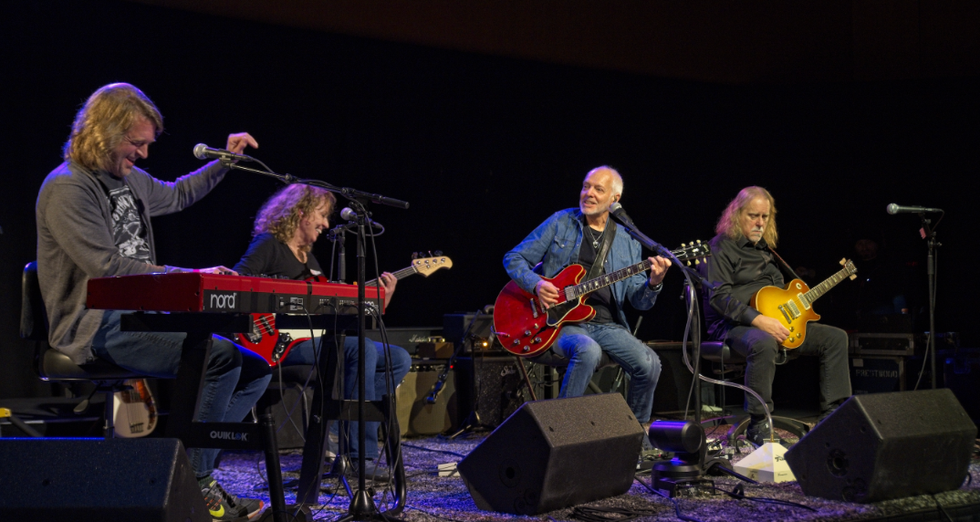
“We were thrilled to welcome Peter Frampton to The Met for an unforgettable visit. Sharing our newly acquired collection of American guitars with him was a true privilege, made all the more special as Frampton recounted his journey as a guitarist and performed some of his most iconic music." - Jayson Kerr Dobney, Frederick P. Rose Curator in Charge of the Department of Musical Instruments at The Met
Frampton’s episode of The Art of Music will air on public television stations nationwide beginning September 6, 2025. Fans may also watch on The Art of Music website or stream on the PBS app.
The national public television World Channel will air the episode Saturday, October 4 at 7pm ET, with a repeat on Monday October 6 at 5am ET (adjust by time zone). Visit worldchannel.org to find your local World Channel station. The program will air on the
All Arts Channel and on the All Arts app in the New York Metro area on Saturday, October 25 at 9 pm.
This special interview and performance featuring Peter Frampton presented by United MileagePlus® Cards from Chase was an unforgettable occasion for Chase United Cardmembers who were invited to attend the intimate live taping. The United MileagePlus® Cards from Chase provide Cardmembers with access to exclusive events and experiences in addition to many reward and travel benefits with United Airlines. Underwriters for The Art of Music are The Mark Hotel and SUNDRAGON.
Additional artists to be announced for the series soon. For more information, visit https://theartofmusic.org.
PRS Guitars Brings Back the Mira as an S2 594
PRS Guitars today announced the return of the Mira model to the Maryland factory line, now with the 24.594” scale length. This new iteration, available in both gloss and satin finishes, will be a regular offering in the S2 Series.
The 22-fret S2 Mira 594 covers a wide range of styles, including rock, blues, garage, and punk. Pairing its all-mahogany construction with PRS 58/15 LT vintage-voiced pickups results in warm, focused midrange. The humbuckers are paired with two mini-toggle switches to individually tap the pickups, delivering both authentic humbucking and chimey single-coil sounds.
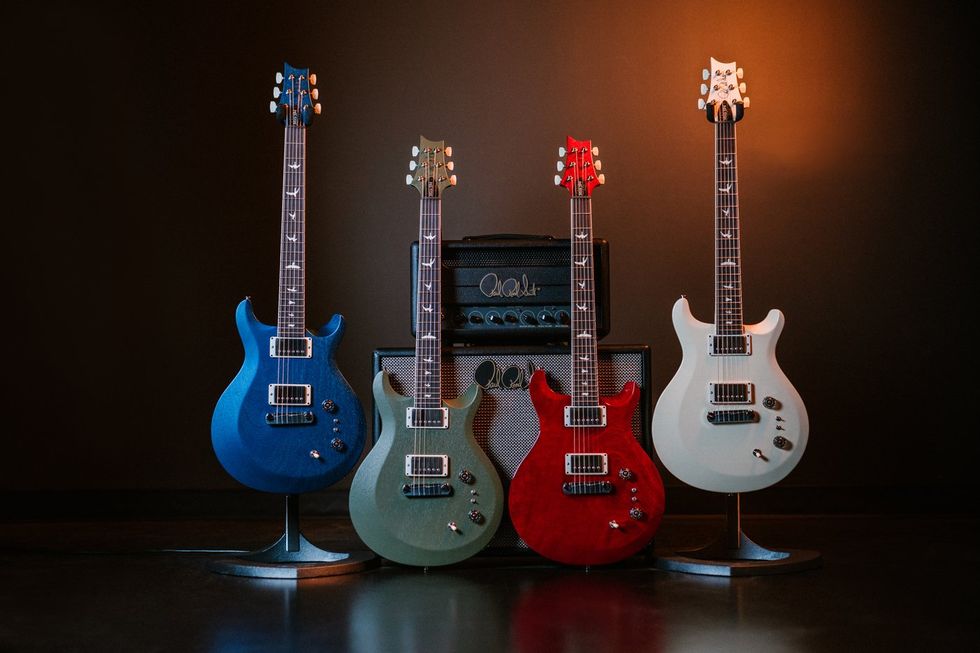
“The Mira has had an interesting history over the course of the last 17 years, but I don’t think it found its true voice until now,” said PRS Guitars Director of Sales, Jim Cullen. “The S2 Mira 594 combines our 24.594” scale length with a Pattern Thin neck shape and a very simple and straight forward feature set that provides an incredibly lively, simple-to-use tool to create music. I hope you are as inspired as we are with the newest evolution of this classic model.”
The S2 Mira 594 is available in: Antique White, Black, Dark Cherry Sunburst, Platinum Metallic, Vintage Cherry, and debut color Black Rainbow Holoflake.
The S2 Mira 594 Satin features the PRS “sinky” satin nitro finish, and is available in: Matcha Green, Mavis Mint Metallic, Metallic Midnight, Dark Cherry Sunburst, Red Apple Metallic, and debut color Cloud Burst.
The Mira was first introduced in 2007 as an all-mahogany pickguard guitar with moon inlays, 24 frets, 25" scale length, a stoptail bridge, and a single mini-toggle. It has appeared across all of the Series and in various configurations, including the popular Mira X. In 2013, the Mira was moved from Core and was one of three models to launch the S2 Series. It was last offered as an S2 in 2018, becoming part of the SE Series from 2020-2023.
PRS Guitars continues its schedule of launching new products each month in 2025. Stay tuned to see new gear and 40th Anniversary limited-edition guitars throughout the year. For all of the latest news, click www.prsguitars.com/40 and follow @prsguitars on Instagram, Tik Tok, Facebook, X, and YouTube.
PRS Guitars Brings Back the Mira as an S2 594
PRS Guitars today announced the return of the Mira model to the Maryland factory line, now with the 24.594” scale length. This new iteration, available in both gloss and satin finishes, will be a regular offering in the S2 Series.
The 22-fret S2 Mira 594 covers a wide range of styles, including rock, blues, garage, and punk. Pairing its all-mahogany construction with PRS 58/15 LT vintage-voiced pickups results in warm, focused midrange. The humbuckers are paired with two mini-toggle switches to individually tap the pickups, delivering both authentic humbucking and chimey single-coil sounds.

“The Mira has had an interesting history over the course of the last 17 years, but I don’t think it found its true voice until now,” said PRS Guitars Director of Sales, Jim Cullen. “The S2 Mira 594 combines our 24.594” scale length with a Pattern Thin neck shape and a very simple and straight forward feature set that provides an incredibly lively, simple-to-use tool to create music. I hope you are as inspired as we are with the newest evolution of this classic model.”
The S2 Mira 594 is available in: Antique White, Black, Dark Cherry Sunburst, Platinum Metallic, Vintage Cherry, and debut color Black Rainbow Holoflake.
The S2 Mira 594 Satin features the PRS “sinky” satin nitro finish, and is available in: Matcha Green, Mavis Mint Metallic, Metallic Midnight, Dark Cherry Sunburst, Red Apple Metallic, and debut color Cloud Burst.
The Mira was first introduced in 2007 as an all-mahogany pickguard guitar with moon inlays, 24 frets, 25" scale length, a stoptail bridge, and a single mini-toggle. It has appeared across all of the Series and in various configurations, including the popular Mira X. In 2013, the Mira was moved from Core and was one of three models to launch the S2 Series. It was last offered as an S2 in 2018, becoming part of the SE Series from 2020-2023.
PRS Guitars continues its schedule of launching new products each month in 2025. Stay tuned to see new gear and 40th Anniversary limited-edition guitars throughout the year. For all of the latest news, click www.prsguitars.com/40 and follow @prsguitars on Instagram, Tik Tok, Facebook, X, and YouTube.
Question of the Month: The Pedals of Our Dreams
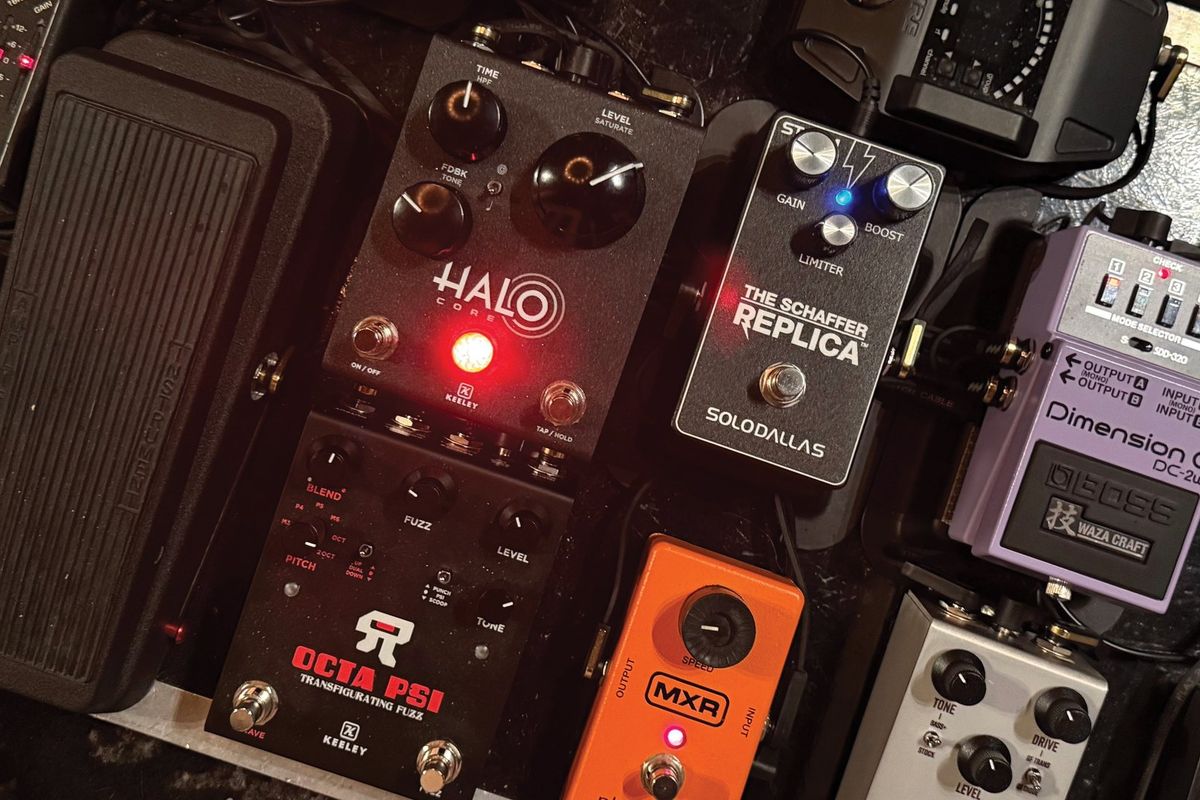
Question: What pedal doesn't exist now that you hope gets built in the next year?
Guest Picker - Penelope StevensMotherhood, Penny & the Pits
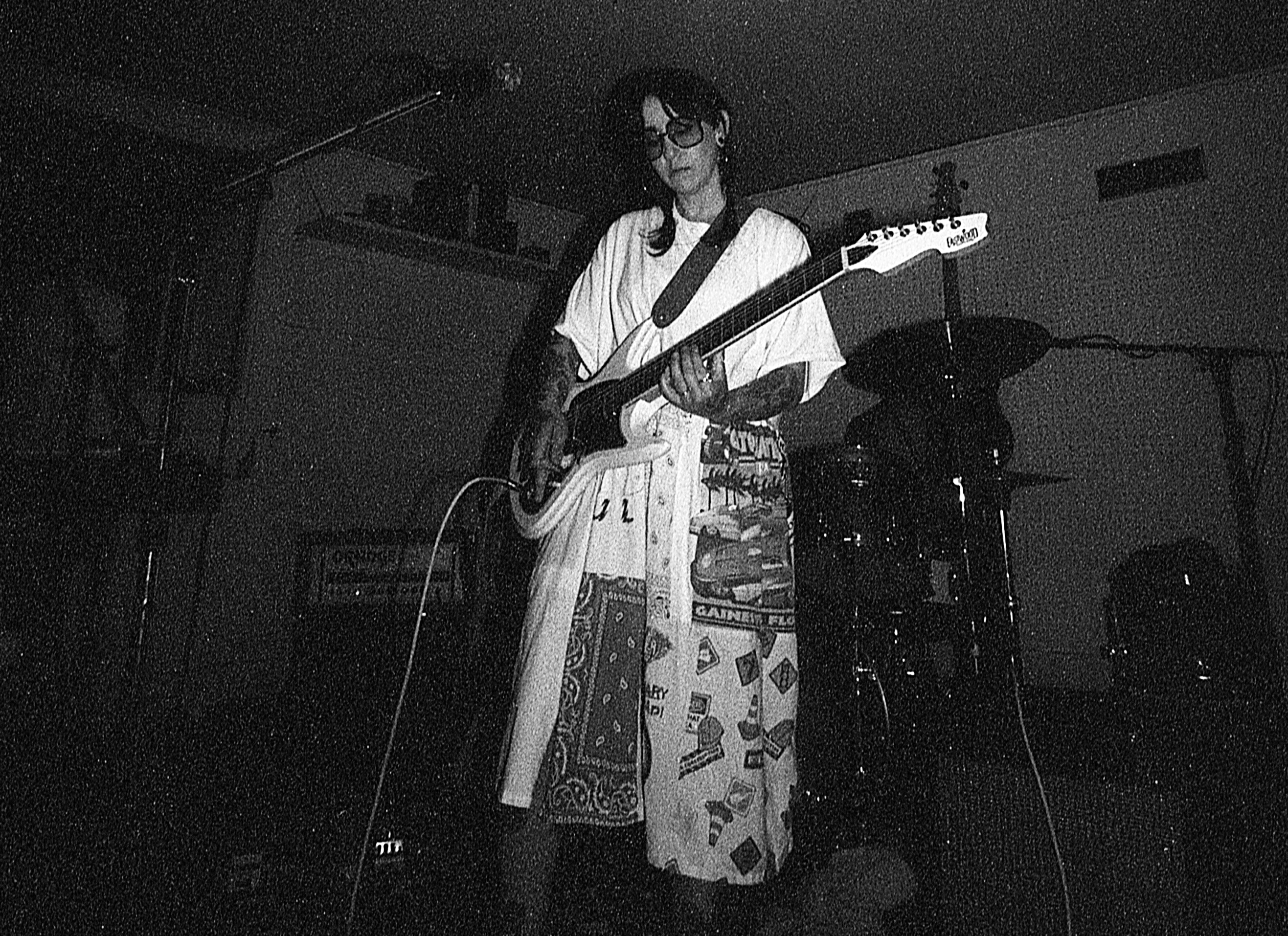
A: I’m a synth player before a guitarist, and for years I’ve been trying to figure out a way to play my synths through my guitar … or my guitar through my synths? I know there are pedals that can make your guitar sound like a synth, even some that can emulate particular models, but I want a pedal that I can connect to any synth, and it can feed whatever patch I’ve built through my chain. I have a Volca Keys that makes absolutely GNARLY tones, and for a while I was trying to figure out a way to have it in my pedalboard as an effect. Alas, this is quite beyond my skillset—I’m no electrical engineer—but the dream has never died. Imagine being able to shape your guitar tone with as many possibilities as on an analog synth! Can somebody make me this pedal please?
Obsession: When I’m not touring, I’m a cocktail bartender. (PLEASE don’t call me a mixologist.) My current obsession is this margarita riff I’ve been working on: tequila blanco, amaretto, lime, and prickly pear shrub. I’m drinking this little number more than I should probably admit, especially as we fight a heat wave in eastern Canada. I’ve been making cocktails to go along with each song on my new album, and filming tutorials for each one on Instagram. The prickly pear margarita will be making an appearance soon!
Reader of the Month - Jin J. X
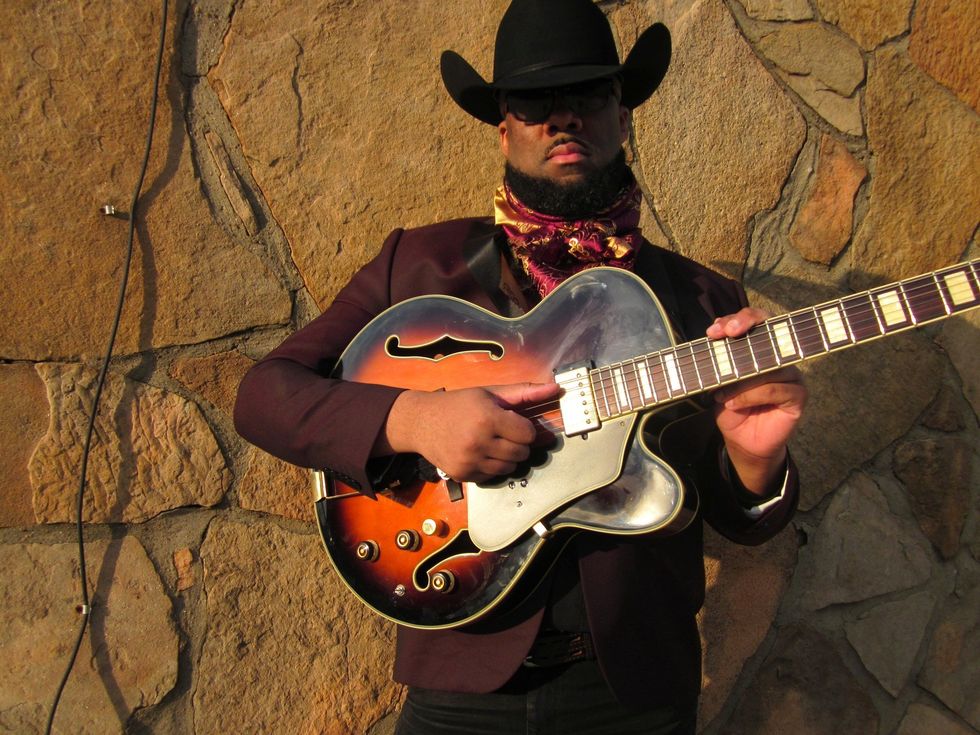
A: The out-of-production Boss VB-2. I absolutely love chorus and vibrato. I also love Boss. While I appreciate the CE-2w and absolutely love the upgrade/update, I just haven’t been able to connect with its counterpart, the VB-2w. I’ve tried multiple times to buy that pedal but to no avail. The Behringer UV-300 is analog and sounds absolutely perfect, though I’ve found that every single one I’ve bought over the years has a switch failure, and many modders can’t really work with them. Also, there are other great vibrato pedals, though without the “rise” function of the VB-2, I don’t find them as useful. I’ve heard the BYOC folks make one, though they seem to sell very quickly. I hope Boss, or someone, makes a true-blue VB-2-style pedal, with the right analog chip, that is built with solid components.
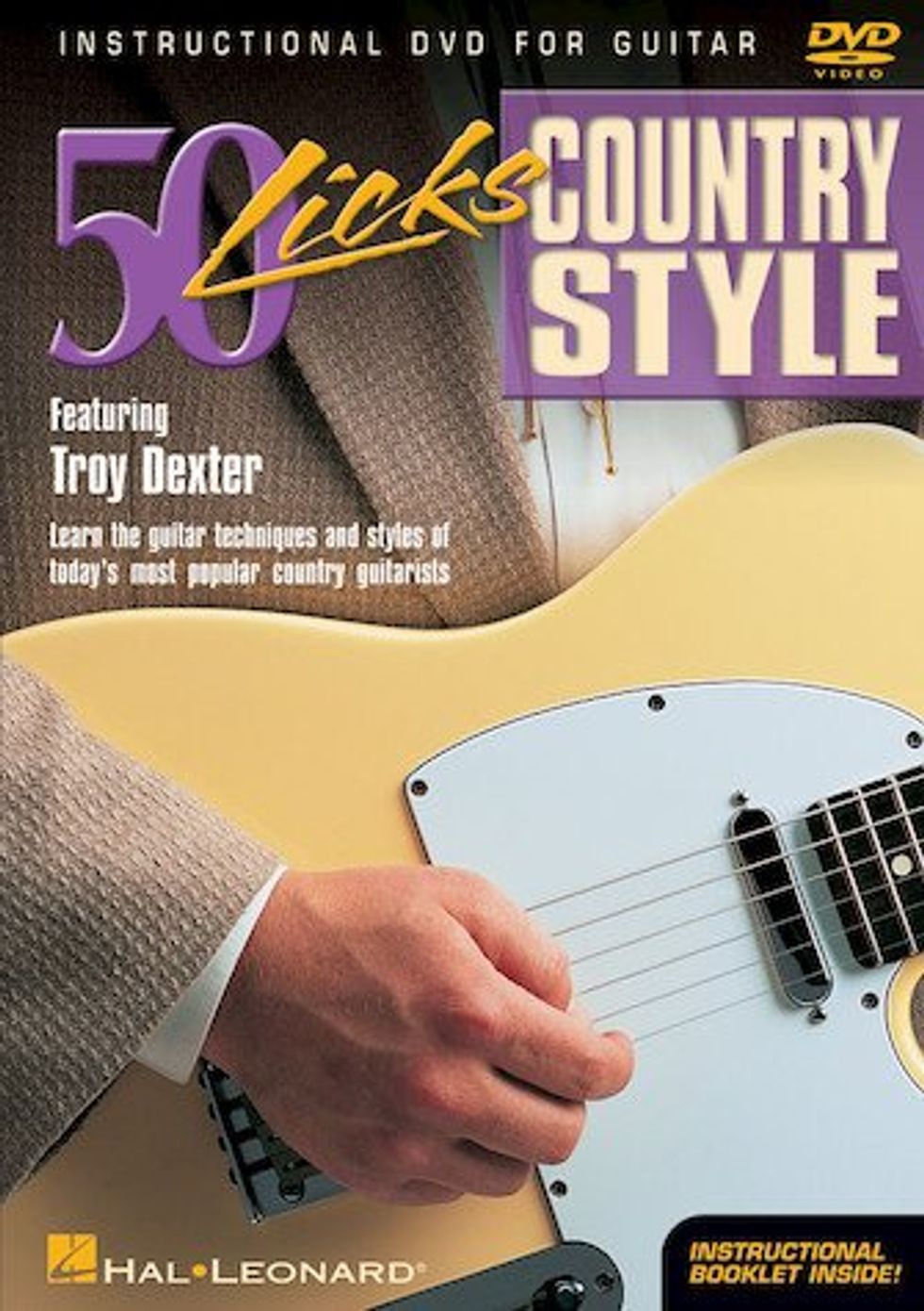
Obsession: Country-style guitar. Fifteen years ago, I bought a DVD called 50 Licks Country Style featuring Troy Dexter. After all these years, I finally pulled it out of the plastic and have begun trying to work those up. In many ways, the licks revolve around dominant 7 chords, so, in some ways, these country licks sound like jazz licks in the bridge position. It’s like a two-for-one special learning them. I also recently released an Afro-futurist/country album earlier this year called The Barefoot, Pregnant, Neck Beard, Marital Bed String Band, so I’ve been playing and promoting that record and putting my country licks to good use.
Brett Petrusek - Director of Advertising
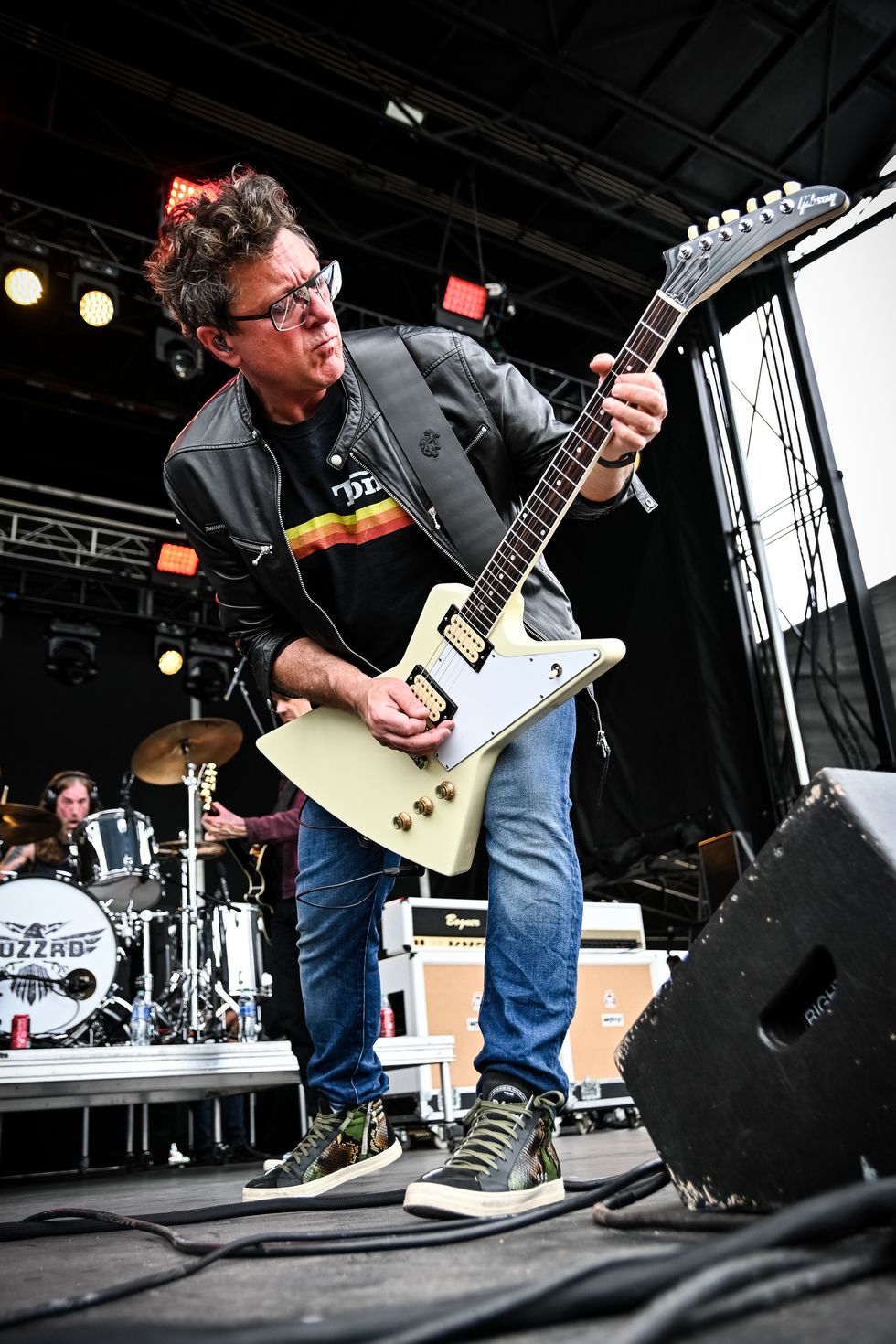
A: I’d love a Boss Waza Craft Dimension C with a mix control knob, or better yet a Waza Craft reissue of the Digital Dimension with expanded tonal range, better filtering, fancy high-quality buffer, and with that ultra-low noise floor.
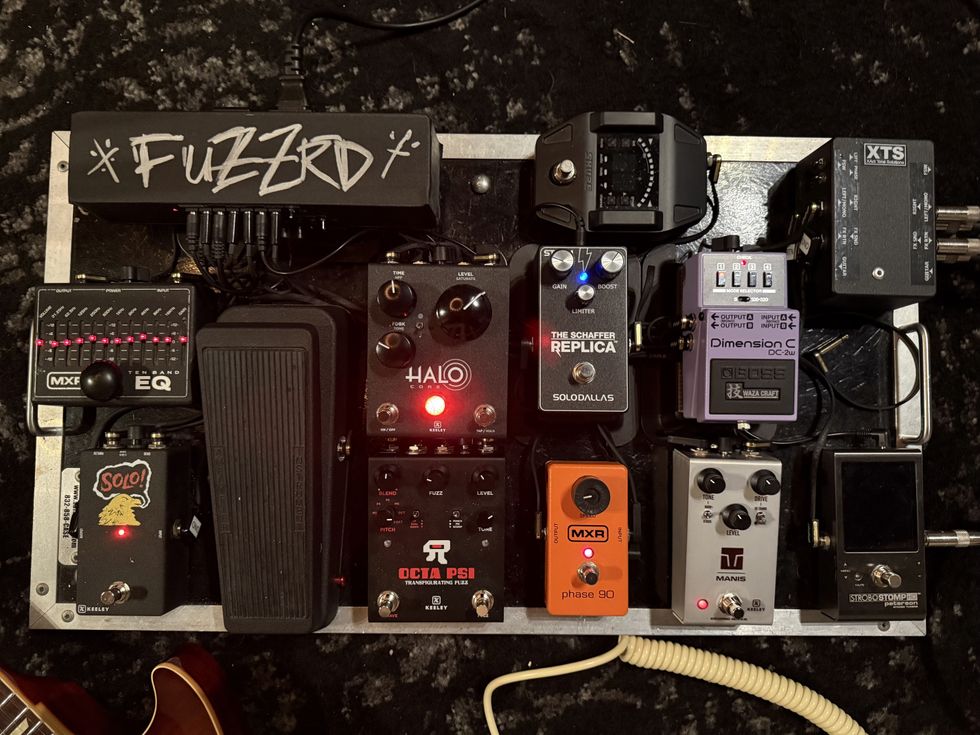
Obsession: Auditioning stereo modulation pedals. I use pedals like this in my live rig to split out in front of two big amps to expand the stereo field. I like the option of being able to keep it subtle and having easy access right on my pedalboard (old-school). It’s an art form to find modulation or doubler pedals that will do this into the front end of high-gain amps without a lot of hiss. I am currently digging the Mr. Black DoubleTracker Stereo; it can get insanely wide (especially in the effects loop). Maybe Keeley will make a stereo 30 ms in their new folded aluminum enclosures … I bet their fanbase would go nuts!
Nick Millevoi - Senior Editor
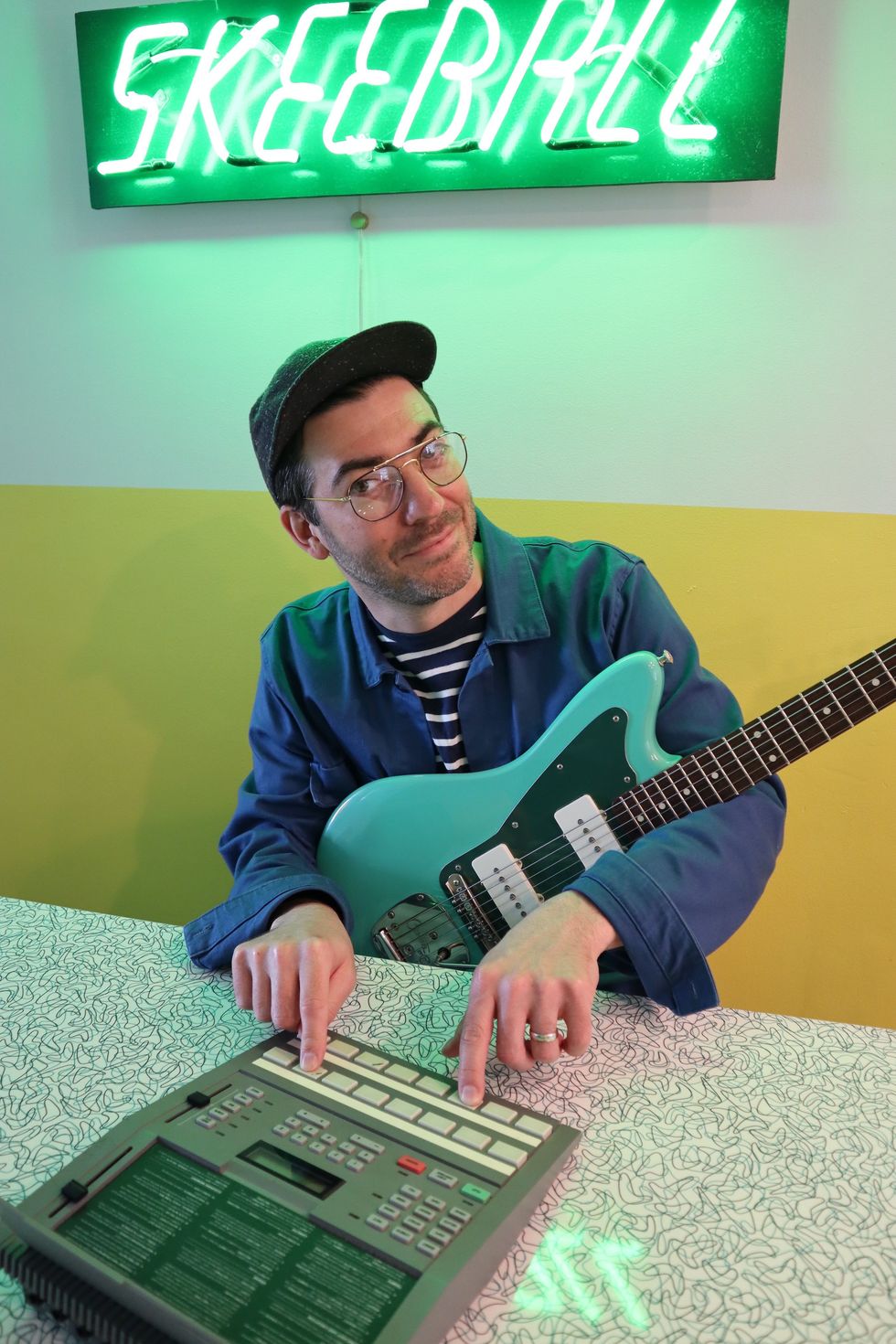
A: I’ve spent years longing for a pedal that captures the unique sonic capabilities of the Lexicon Prime Time. The Soundtoys PrimalTap plugin does an excellent job for working at home, but I dream of making those warm, ethereal sounds live (and the pricey rack unit itself isn’t practical for most of us). The Prime Time’s double delay lines with lo-fi-enhancing multiply knob sounds truly unique among delay units (dig it, Daniel Lanois enthusiasts), and its hip primary color knobs demand pedalboard real estate!
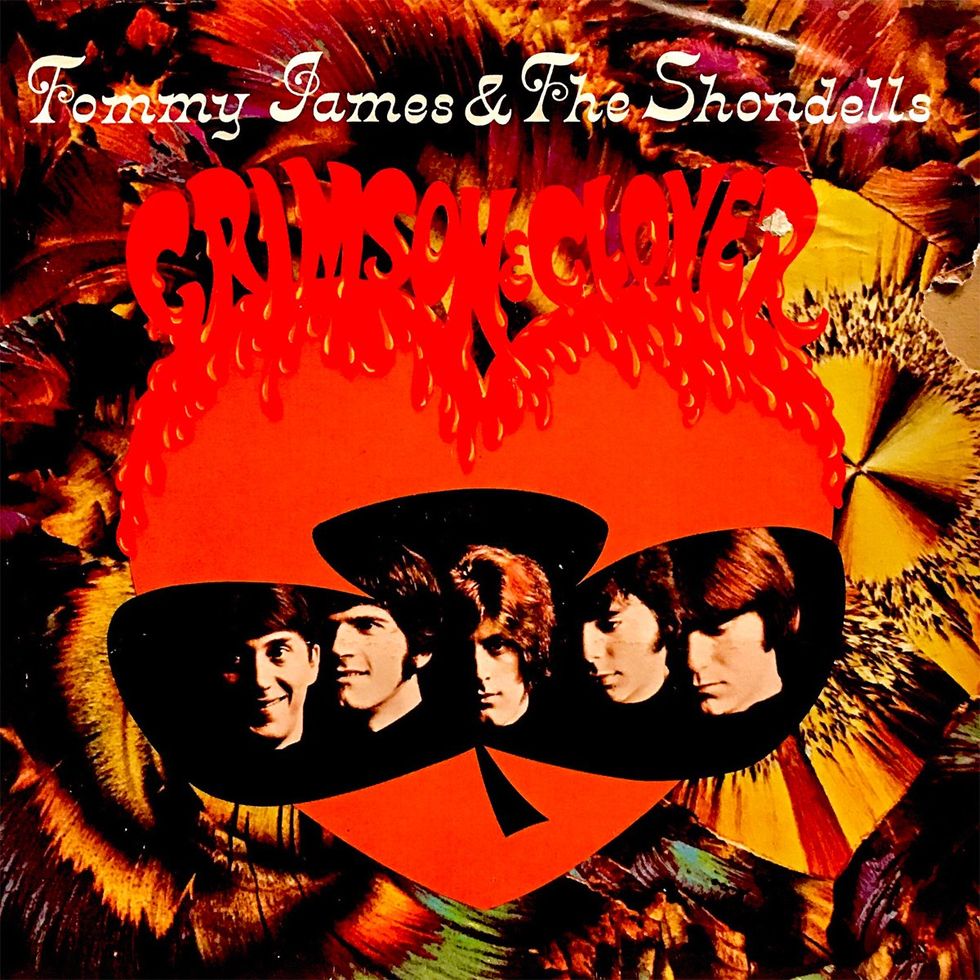
Obsession: I just caught Tommy James & the Shondells live and was blown away. Over the course of a relentlessly hit-laden set list—seriously, it was one after another: “Crystal Blue Persuasion,” “Mony Mony,” “Crimson and Clover,” “I Think We’re Alone Now,” “Draggin’ the Line,” and on and on—Tommy’s voice was in the finest form, driven by a powerful, heavy-grooving band. Go see ’em if you can!
T-Rex Effects Twin Blaze Giveaway from Guitars.net!

T-Rex Twin Blaze Giveaway from Guitars.net
T-Rex Twin Blaze
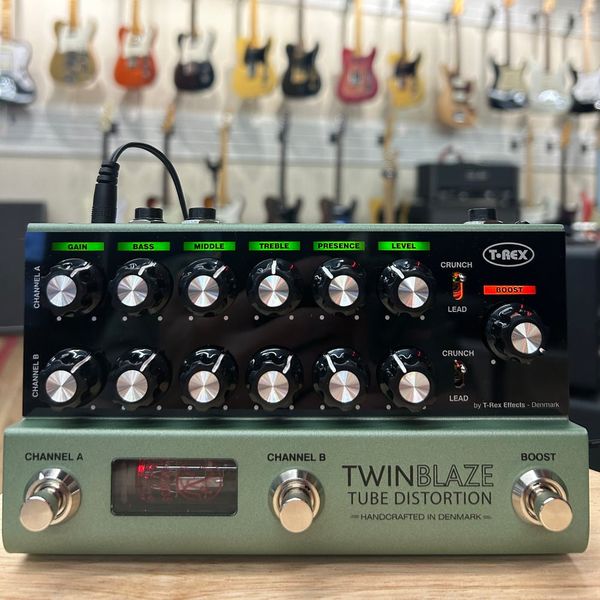
- Handcrafted in Denmark
- An identical two channel, tube driven Overdrive Distortion (12AX7A) spiced with the legendary T-Rex Tone and multiple functions.
- The extended tone control allows you to go from clear British sound to deep-end distortion, obtaining a variety of sound settings.
- Crunch and Lead setting for each channel, which goes from gentle, crispy blues to over the top lead sound.
- The emulated Speaker Simulation output is directed to the studio setup or other external effectS.
- A 20dB Clean Boost works individually to dial in the perfect solo level without changing the tone and gain structure.
- 12V power supply included.
.rbm-pick-card { --rbm-border: ; --rbm-accent: ; border: 2px solid var(--rbm-border, #e53e3e); border-radius: 10px; padding: 16px; background: #fff; font-family: inherit; position: relative; } .rbm-pick-badge { position: absolute; top: -10px; left: 12px; background: var(--rbm-accent, #e53e3e); color: #fff; font-size: 12px; line-height: 1; padding: 6px 10px; border-radius: 6px; font-weight: 700; } .rbm-pick-wrap { display: grid; grid-template-columns: 110px 1fr; gap: 16px; align-items: start; } .rbm-pick-img { aspect-ratio: 1 / 1; /* forces square crop */ overflow: hidden; border-radius: 6px; background: #f3f4f6; /* subtle placeholder */ } .rbm-pick-img img { width: 100%; height: 100%; object-fit: cover; /* crops without distortion */ display: block; } .rbm-pick-title { margin: 0 0 4px; font-size: 20px; font-weight: 800; color: #111; } .rbm-pick-sub { margin: 0 0 12px; font-size: 14px; font-weight: 700; color: #334155; } .rbm-pick-btns { display: grid; gap: 10px; max-width: 560px; } .rbm-pick-btns a { display: block; text-align: center; background: #000; color: #fff !important; text-decoration: none; padding: 12px 14px; border-radius: 8px; font-weight: 800; letter-spacing: .3px; } .rbm-pick-btns a span.price { text-transform: none; } .rbm-pick-btns a span.label { text-transform: uppercase; } /* Responsive */ @media (max-width: 560px) { .rbm-pick-wrap { grid-template-columns: 80px 1fr; } .rbm-pick-title { font-size: 18px; } }
T-Rex Twin Blaze
“I play two hours a day. Three is too much, isn’t it?”: Spinal Tap’s Nigel Tufnel on the secret of guitar practice

Back in 1984, Spinal Tap’s Nigel Tufnel shattered the limits of rock and roll with an amp that cranked all the way up to 11. Now, over 40 years later, he’s back for Spinal Tap II: The End Continues. The (mock) documentary sees the group reuniting after 15 years – and Tufnel’s got some advice for guitarists everywhere.
Speaking to Guitar World, the now 77-year-old fictional rocker insists that the secret to keeping your chops in order is consistency. “I play two hours a day,” he says. “Three is too much, isn’t it? I like to take a walk in the morning with Moira [his partner]. I come back, have a little breakfast, and then I sit down and play. It’s not exactly two hours, but it’s normally two hours. Then I go to the cheese shop.”
- READ MORE: Eddie and Alex Van Halen thought This Is Spinal Tap “wasn’t funny” because it was too true to life
While the legendary Tufnel now runs a cheese ship, he insists he still plays his instrument “every day” and he’s still “learning” new tricks, too. “I play differently than I once played, and I’m learning,” he explains. “I used to play a lot of fast solo things, but now I’m listening in a different way to a spacious way of playing, which is more long notes.”
It’s quite a reserved approach to the instrument, considering some of Tufnel’s peers. In a recent chat with The Smashing Pumpkin’s Billy Corgan, Steve Vai recently admitted that he’d play for 9 hours every day if he could. “It becomes sort of like an addiction,” he said. “My schedule back [when I was young]… I was happy if I got nine hours a day. I was very neurotic, very myopic.”
“It just had such a pull, such an attraction, such an interest. Such a joy,” he continued. “The funny thing was, it didn’t feel like discipline… It was a passion. Passion is a much more powerful engine of creation than discipline.”
Two hours works just fine for Tufnel, however. And he’s still advancing as a guitarist, learning to work with new effects and advancements in technology to aid his approach to guitar. “There are lots of pedals that people have done in the last years that are quite extraordinary,” he reflects. “I do a little work on them… I take them apart, and I do a little fooling around with wires and stuff like that to get the sound I’d like.”
“Lots of times I break them because I don’t really know how to do that work,” he admits. “I haven’t been trained, but it’s interesting to open things up, see all the wires and move them about a bit.”
One of the most significant shifts over the last 41 years comes in the form of Tufnel’s new infinity Marshall amp. “Marshall has made for me an amplifier, the head, and if you look at the dials, it now goes to Infinity. Just think about that for a moment. Think about infinity – oh, my God, that’s literally infinity,” Tufnel says.
“Lots of times I break them because I don’t really know how to do that work. I haven’t been trained, but it’s interesting to open things up, see all the wires and move them about a bit.”
The new Spinal Tap II: The End Continues follows the group’s reunion for one final blow-out gig – and it even featured the likes of Elton John, the legend singing on a live rendition of 2009’s Stonehenge.
The decision to document the final show came after a “long discussion” with the band and director Marty DiBergi. “Marty made a case that it made sense for us to do this new thing, which is us coming together again for a reunion,” Tufnel explains. “I haven’t seen the lads for 15 years… and besides that, we had a legal obligation to do one more show.”
Spinal Tap II: The End Continues lands on 12 September.
The post “I play two hours a day. Three is too much, isn’t it?”: Spinal Tap’s Nigel Tufnel on the secret of guitar practice appeared first on Guitar.com | All Things Guitar.
“It only felt right to return the favour”: Al Di Meola is the latest guitarist to play Greeny – so he let Kirk Hammett play his ‘71 Black Beauty in return
![[L-R] Kirk Hammett, Al Di Meola and Robert Trujillo, with another picture of Al Di Meola holding the Greeny Les Paul [inset]](https://guitar.com/wp-content/uploads/2025/09/Al-Di-Meola@2000x1500.jpg)
Al Di Meola has become the latest guitarist to get his hands on Greeny – the iconic 1959 Gibson Les Paul Standard once owned by Fleetwood Mac’s Peter Green – courtesy of its current owner, Metallica’s Kirk Hammett.
And to return the favour, the jazz fusion maestro has let Hammett have a go on his legendary Black Beauty Gibson Les Paul.
Kirk Hammett and Al Di Meola recently both attended the Hamptons launch party for Metallica’s SiriusXM radio station, and the event saw Di Meola get the chance to get his hands on Greeny for the first time.
The event also saw Beatles legend Paul McCartney attend to watch Metallica perform.
In footage posted on social media, Di Meola can be seen examining the iconic LP, asking “Was [Fleetwood Mac’s Oh Well] done on this guitar? Oh, shit!” before playing the track’s classic pentatonic riff.
And after being granted the honour of playing one of guitardom’s most revered instruments, Di Meola was determined to repay the favour, and later let Hammett have a go on his 1971 Black Beauty Les Paul.
“After Kirk introduced me to Greeny last week, it felt only right to return the favor by introducing him to my 1971 Black Beauty,” he writes in a new Instagram post. “That’s the guitar you hear all over [his 1977 album] Elegant Gypsy.” The Black Beauty Les Paul also featured on Al Di Meola’s 1976 album, Land of the Midnight Sun.
Having existed for decades, the Greeny Les Paul has passed through the hands of a plethora of high-profile guitarists. Once owned by Fleetwood Mac’s Peter Green, the instrument is now owned by Kirk Hammett, who is impressively charitable with regards to who he lets play it.
Recently, former Ozzy Osbourne guitarist Jake E. Lee revealed Hammett gave him the opportunity to play Greeny at Black Sabbath’s Back to the Beginning farewell, and admitted that he’s “missed it since”.
And earlier this year, Hammett revealed he had let White Stripes hero Jack White play the guitar onstage.
The post “It only felt right to return the favour”: Al Di Meola is the latest guitarist to play Greeny – so he let Kirk Hammett play his ‘71 Black Beauty in return appeared first on Guitar.com | All Things Guitar.
Sheptone® Unveils the 7078 Humbucker
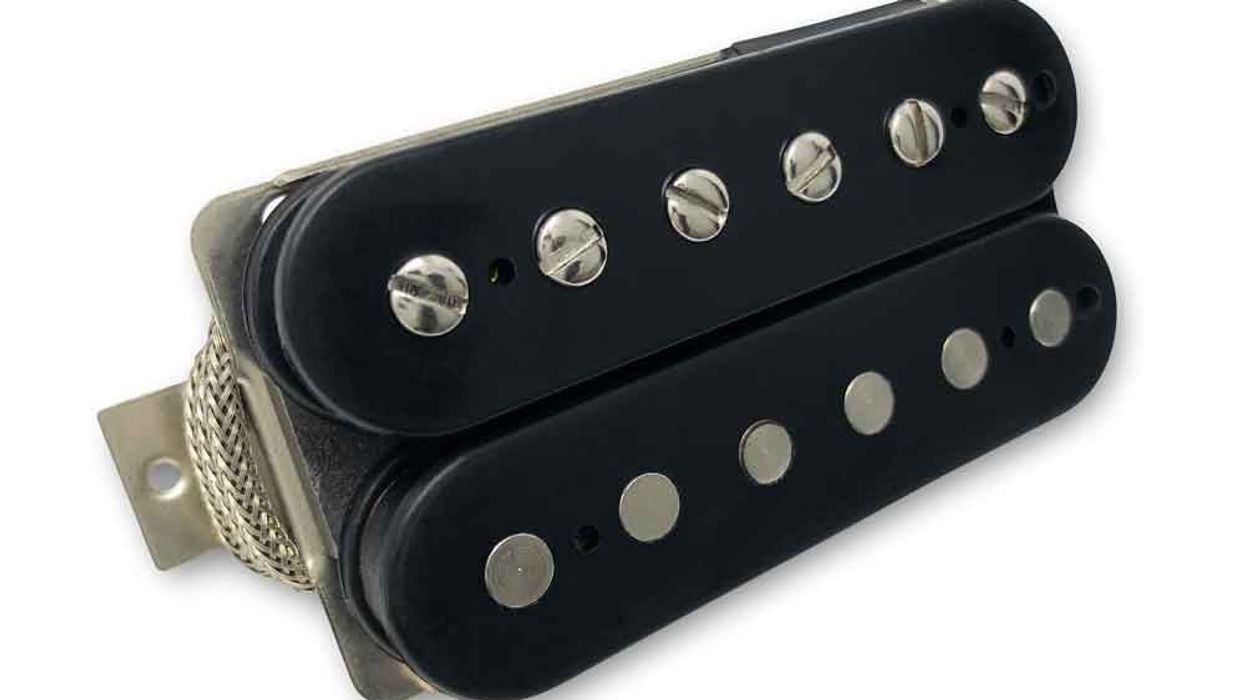
Sheptone® announces the 7078, a brand-new humbucking pickup inspired by the legendary tones that redefined rock guitar in 1978. Considered an industry secret for the past 18 years, Sheptone has been the “go to” for professional guitarists wanting to achieve that 1950’s tone that initially revolutionized electric guitar. The 7078 is the next step in the evolution of the Sheptone product line.
The 7078 pays homage to the iconic rhythm tones captured on Van Halen’s groundbreaking debut album. It was a sound that inspired generations of players and changed the way the world hears and plays the electric guitar. From the driving rhythms of You Really Got Me to the groove of Jamie’s Cryin’ and the raw fire of On Fire, the DNA of those unforgettable tracks lives on in the 7078.
At the core of that original tone was a stock 1975 Ibanez® Destroyer loaded with a Maxon® Super 70. The Sheptone 7078 recreates that magic with uncompromising authenticity, using the finest materials and painstaking craftsmanship. Each unit is hand-assembled by Sheptone owner and builder Josh Vittek, ensuring the detail and precision needed to deliver truly inspirational tone.
Using a rough cast, degaussed Alnico 8 magnet, the 7078 delivers articulate note definition and huge dynamics. The coils are computer wound with 42AWG plain enamel wire to Sheptone’s exacting specifications, ensuring consistent tone from pickup to pickup while staying true to vintage character. Sheptone’s proprietary double-black butyrate bobbins anchor the design, paired with German nickel silver baseplates that follow original-era specifications. Vintage braided hookup wire keeps period-correct authenticity, while the 49.2mm pole spacing and a resistance averaging around 7.7k complete the historically correct construction.
“This pickup is for a sure a future ‘secret sauce’ for many people's rigs. It really does things right! Harmonics in a second, the perfect amount of push on an amp yet while retaining complete clarity for clean playing to the most percussive metal rhythms my caveman wrist can throw at it. There's a certain sizzle near the mid highs that spikes your amp distortion in a way that I've not heard before. From the most basic of rock to the fastest, crustiest thrash, this pickup is quickly becoming my go-to,” said professional touring and studio guitarist, Charlie Bellmore of Jasta and Kings and Liars.
“The 7078 is more than a pickup. It’s a tribute to the sound that made so many of us pick up the guitar in the first place. Including me!” said Vittek. “I build each one by hand, with the same mindfulness and materials as I do all my other models. This may be the last pickup you’ll ever need… unless, of course, you own more than one guitar.”
The Sheptone 7078 is available now directly from Sheptone and through select dealers worldwide.
For more information, visit www.sheptone.com
Stompin’ to the Top: Meet Three of the Most Successful Independent Pedal Companies

We’ve been basking in the golden age of guitar-effects pedals for some time now, but somehow things just seem to keep getting better and better. Holy-grail tones have been decoded and transcribed into pedal form, even as radical new stompbox inventions give musicians the ability to create new ones. And guitarists’ pedalboards are no longer governed by the biggest names in pedal manufacturing. These days, you’re just as likely to see a Boss DS-1 on someone’s board as you are a one-off build from a friend of a friend.
The ground between the majors and the building-for-fun crowd is filled with passionate pedal makers who are changing how guitarists approach their instruments. In this piece, we’ll introduce you to three North American pedal companies who have changed the pedal game with unique sounds, community-minded approaches, and years of hard work—plus, a quick word on their top stomps.
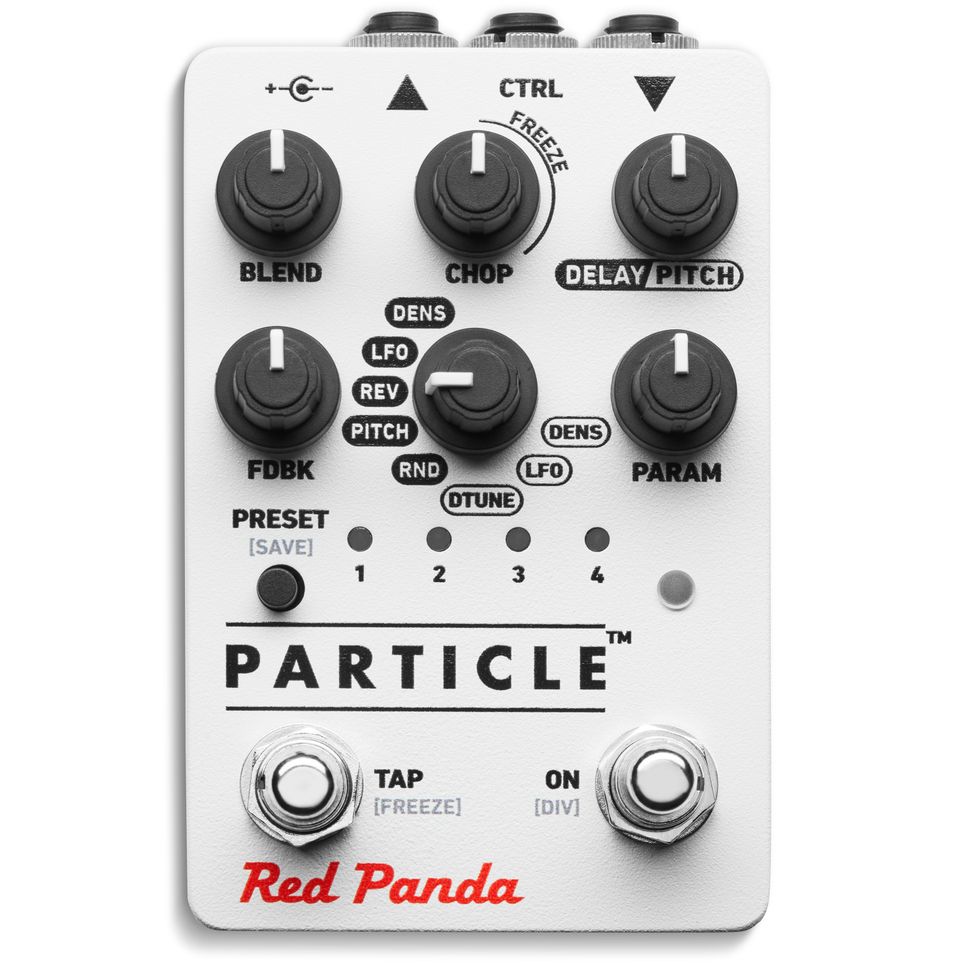
Red Panda
Biggest Hit: Particle
The Story:
Curt Malouin isn’t a guitar player, and he didn’t set out to make guitar-effects pedals, yet that’s exactly what happened with Red Panda. Malouin was working a demanding software engineering job and had been building modular software for 15 years before he started soldering pedals in his garage in 2009, but his love for electronics began when he was 11. Malouin says that having Asperger’s syndrome facilitated his obsession with sound: “I was really super interested and focused on using algorithms to manipulate sound and zoom in on little details of the sound,” he says. “It’s what my brain is focused on most of the time.”

Malouin messed around with drum machines, synths, and turntables when he was growing up in metro Detroit, listening to techno and hip-hop created in the city. Pedals were of a piece with those scenes: tools in a sound creator’s kit that were highly tweakable and allowed for brilliant manipulation, like how DJs and hip-hop artists used both old and new technologies to create unique sounds. When Line 6’s ToneCore pedals, like the Echo Park delay and Verbzilla, dropped, Malouin discovered that they included interchangeable modules that allowed users to modify the DSP code. It happened to be the same code he used in college while studying electrical engineering. That helped bridge his expertise with his new interests. “It was a combination of wanting to get back to something a little more simple and physical than working on software,” he says.
In 2011, Red Panda released the Particle, Malouin’s first ground-up design and the first-ever granular delay pedal. Word spread about this one-man operation building deeply featured digital pedals. Four years later, Malouin moved to a shared workshop. Another five years passed before Red Panda moved into its current office and workshop.
Red Panda’s builds are entirely digital, and feature-wise, they’re more complex than your average stomp. As a rule, they’re equipped with stereo inputs and outputs, full MIDI implementation, and web-based editing. Malouin is the engineer behind every step of their creation—he even built the operating system that runs the algorithms and digital signal processing (DSP) code. Malouin says that involvement keeps Red Panda’s conceptual integrity consistent from top to bottom.
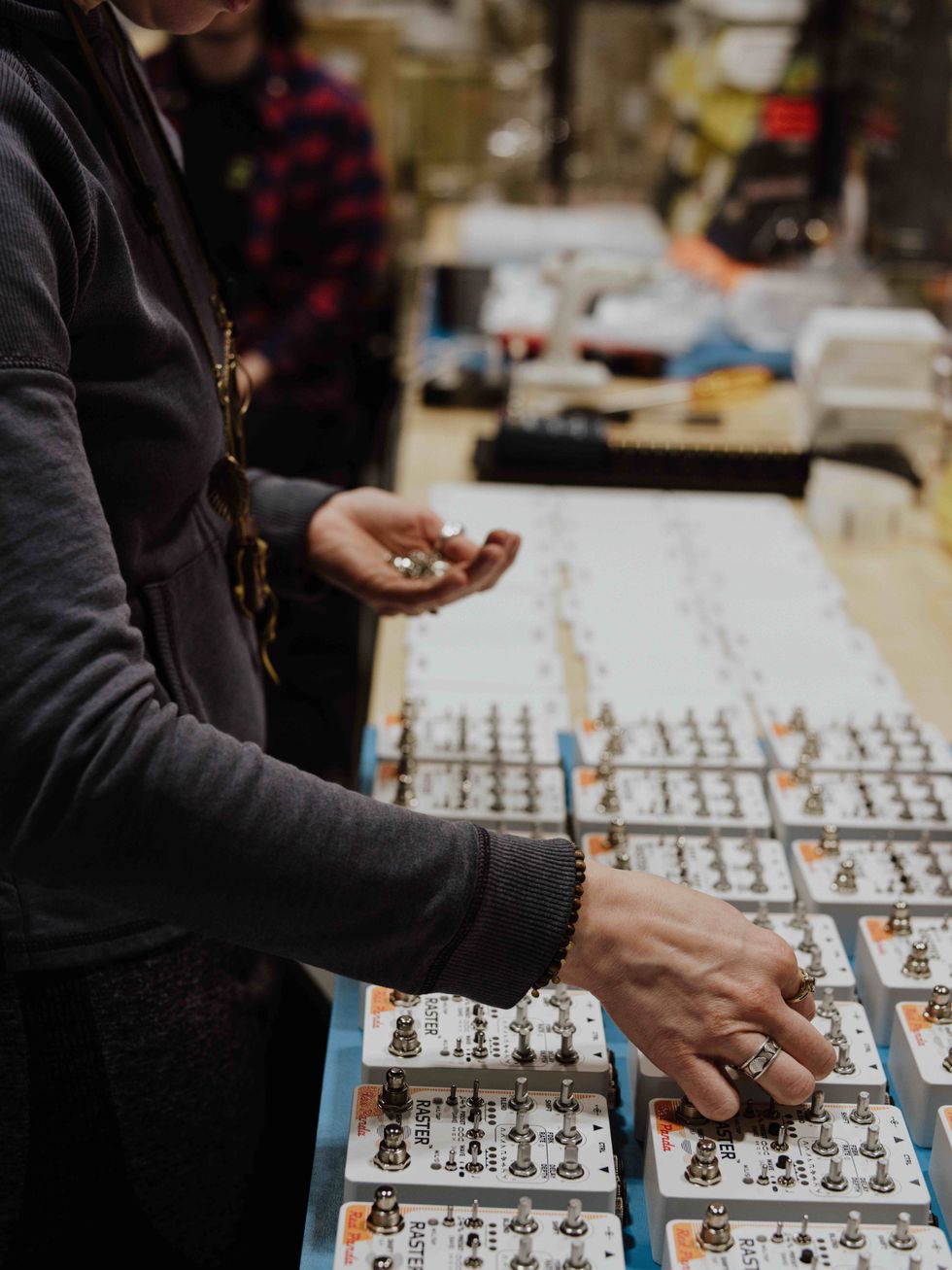
Red Panda’s new RD1 series, which has been in development for three years, aims to deliver these designs in a pared-back, more affordable package. They’ll feature the same algorithms as the flagship products, but with fewer features and more focused applications—something like an old-school pedal that “does one thing, and does it really well,” explains Malouin. “There’s a lot of fun engineering challenges in trying to keep something that sounds just as good as our other pedals, but we can sell at a lower price point that allows musicians to grab it and make interesting music.”
The pedals were ready to go in April this year, but Donald Trump’s volatile tariff applications made it impossible to meet the price target Malouin wanted to hit. Red Panda’s pedals are all assembled in Michigan, but he sources parts from around the world, many of which Malouin says will never be made in the U.S. He adapted by, once again, leaning on new processes to reduce costs; for example, designing the pedals to be as quick to assemble as possible, or replacing several components with one that can do multiple things. “It’s a little engineering magic trick that makes this work fun,” he says.
Red Panda has grown since its beginning, but not by much. Malouin and only three others are day-to-day, full-time workers, which means everyone handles a bit of everything, from assembly to orders to shipping to video productions.
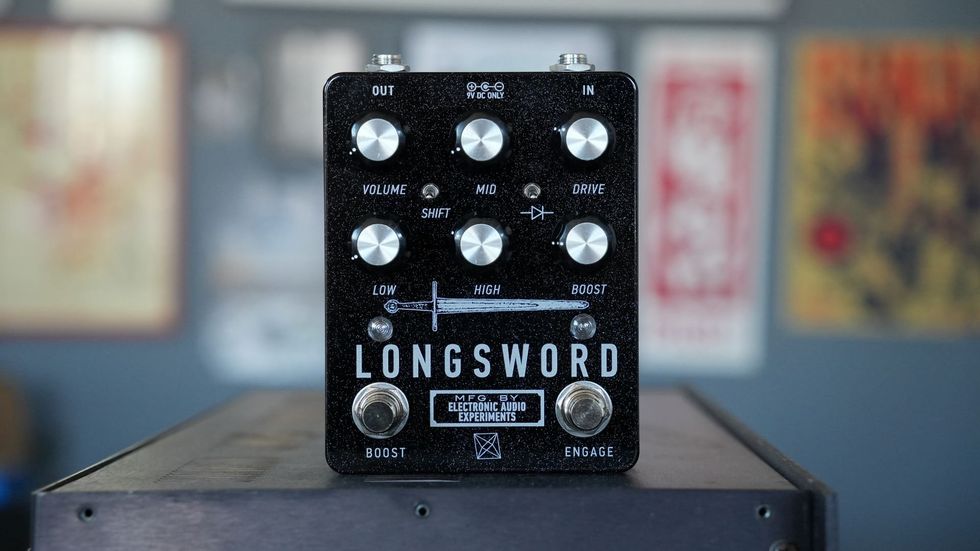
Electronic Audio Experiments
(electronicaudioexperiments.com)
Biggest Hit: Longsword
The Story:
It’s been just over 10 years since Boston-based pedal builder John Snyder released the first version of the Electronic Audio Experiments Longsword, but it wasn’t until 2020, when he began building full time, that the pedal reached its final form.
If you’re curious, though, you can see exactly how the Longsword evolved over the years. Snyder tracks and publishes all the changes to each of his pedal’s circuits over the years on EAE’s website. “For me, it was partly to quell confusion on the internet where people were like, ‘This version of this pedal has this thing and this version has this thing,’ or people saying, ‘I have this serial number, when did you change the board?’ I can just say, ‘Here’s the change log, it’s on the website, it’s in the manual.’ I wish other companies would do something similar.”

Snyder began playing in bands in middle school, and during his college years in the early 2010s he was active in the Northeast’s DIY community of emo, punk, and hardcore bands of all stripes. Influenced by a family heritage of engineers (one of his grandfathers was head of quality control at a vacuum-tube plant in Kentucky), Snyder was always the token gearhead in his circle. His bands were never too popular, which meant he had more time to focus on crafting unique sounds between short tours and weekend runs.
Dirt lovers around the world have a rare meteorological phenomenon to thank for their EAE pedals. In early 2014, Boston received more than 20 inches of snow over two days. Snyder was snowed into his illegal basement apartment, unable to visit his girlfriend (now wife) or any friends. It was during these locked-in days that Snyder breadboarded the Longsword. He built one for himself, and the following summer he sold a batch of 15.
Snyder finished a post-grad degree in electrical engineering in May 2020, and outside of the defense industry, there weren’t many prospects. After his wife suggested that he focus on building pedals, Snyder spent three months working on streamlining his processes. That turned into six months, which turned into a year. The operation didn’t fit into Snyder’s guest room anymore, so he upgraded to a real shop space for a while before landing on EAE’s current location, a corner of the second floor of a warehouse in Waltham, Massachusetts. (Their downstairs neighbours are Small Bear Electronics.)
“We’re all helping each other, which is a really awesome way to build community and make what we do more interesting. Something that I try to keep in mind is that this industry is so, so small, and we’re not really competing with each other.”–John Snyder, Electronic Audio Experiments
The Longsword was born from Snyder chasing the solid-state and op-amp distortion sounds of classic post-hardcore acts like Touché Amoré, La Dispute, and mewithoutYou. The Longsword’s lineage includes elements of the Boss HM-2, MXR Distortion+, and the Caroline Wave Cannon (which itself has some RAT DNA), but Snyder added a Baxandall EQ circuit. “I wanted something that didn’t already exist in the market and was very purpose-driven in its design, and could be unique enough to stand out,” explains Snyder.
Snyder credits mentors like Nick Williams of Dunwich Amplification with sharing their time and expertise in EAE’s early days: “[Nick] taught me a lot of the basics of, like, ‘How do I lay out circuit boards? How do I order circuit boards? Where do I find parts and stuff?’” Others shared meat-and-potatoes tips like how to drill enclosures in a bedroom without getting aluminum shavings everywhere, and how to market and build artist relations. Snyder tries to pay it forward these days by helping out new builders. “We’re all helping each other, which is a really awesome way to build community and make what we do more interesting,” says Snyder. “Something that I try to keep in mind is that this industry is so, so small, and we’re not really competing with each other. We’re all competing with Amazon Basics and Behringer.”
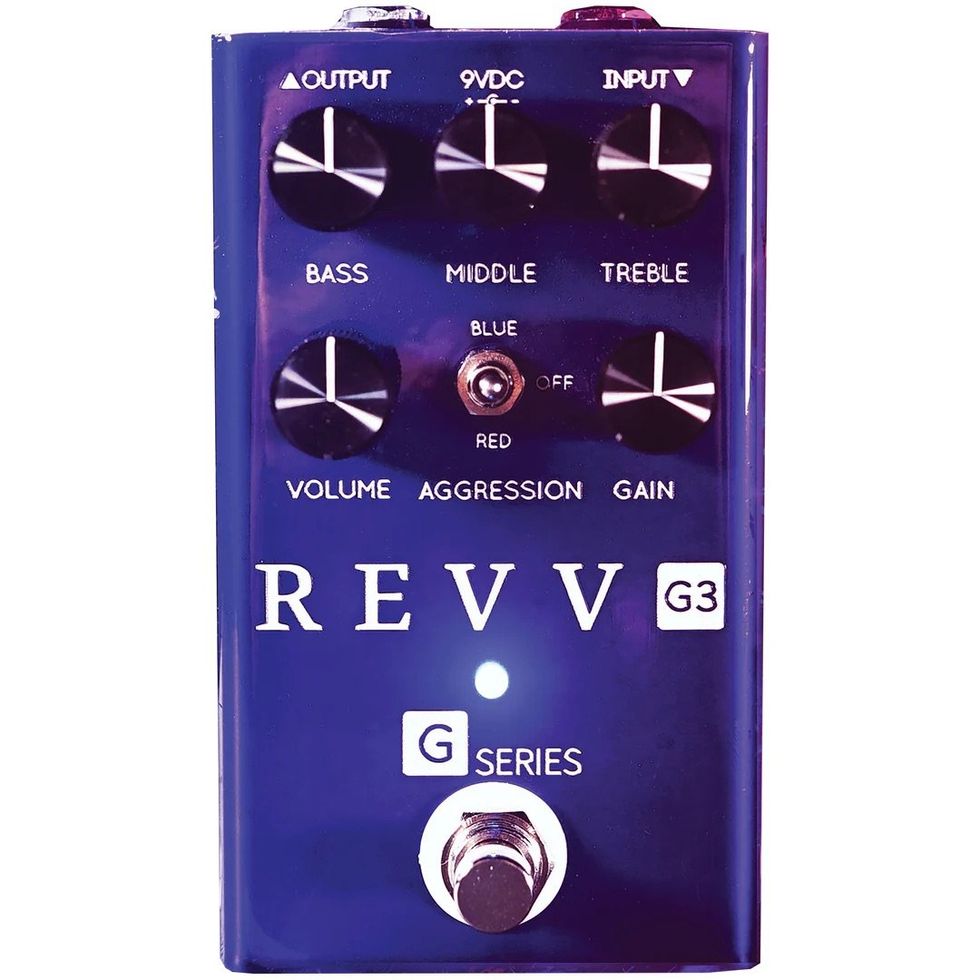
Revv
Biggest Hit: G3
(revvamplification.com)
The Story:
Winnipeg’s Revv Amplification made their name on the reputation of their excellent high-gain amplifiers, like the Generator 120. The 4-channel, flagship amp head was the sound in lead designer and president Dan Trudeau’s head. Trudeau, along with vice president of sales and marketing Derek Eastveld, took the formula a step further in 2018 when they put Revv’s rich, articulate, ground-shaking dirt into stompbox format.
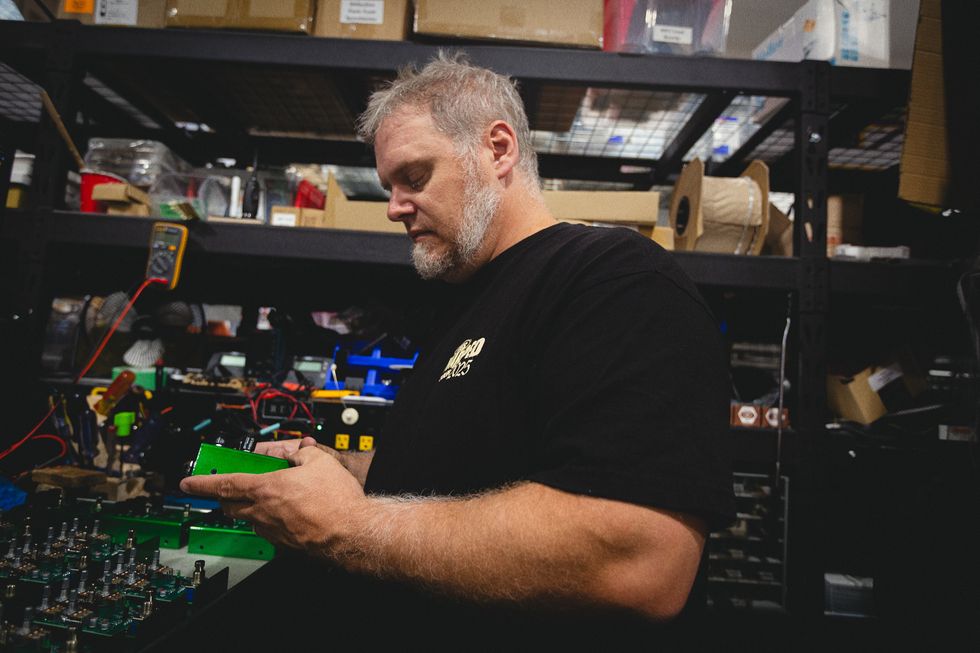
The day Revv’s G3 pedal launched in May 2018, Eastveld was on a flight to Germany. He and his colleagues had figured they would sell 250 of them in a year. By the time he landed later that day, they’d racked up 270 sales through their website. By the end of the month, they had more than 1,000 orders to fulfil. The success was exciting, but it also posed a problem: Revv only consisted of four full-time workers. The fateful launch provided the cash flow needed to scale up the company, and today 20 people work full-time for Revv, across production, marketing, sales, design, and administration.
Revv’s amp-in-a-box G-series pedals—G2, G3, and G4—are color-coded according to the corresponding channel on the Generator 120. The G2, for example, is green, because when the namesake amp’s second channel is engaged, the amp’s LED glows green. Eastveld says that means some people mistake the pedal for a Tube Screamer clone, which is a big mistake. The G2 is much more saturated and modern-sounding. Eastveld describes it as splitting the difference between contemporary high-gain monsters like Mesa Boogie Rectifiers and 5150s, and mid-gain classics like vintage Marshalls. The purple G3, though, remains Revv’s top-selling pedal. It’s even more modern, mid-focused, and aggressive, with a 3-position switch to navigate between different voicings and saturation levels.
“We’re always taking notes about like, ‘Okay, what did people respond well to, and what do we need to take another look at?’”–Derek Eastveld, Revv
Eastveld and Trudeau pride themselves on staying flexible and responsive to their users. They constantly monitor their social media for comments and suggestions. “Maybe somebody bought something and then sold it because it wasn’t a right fit for them, and we’re always taking notes about, like, ‘Okay, what did people respond well to, and what do we need to take another look at?’” explains Eastveld. That openness has led directly to amp and pedal upgrades. The G series pedals, including the famed G3, got a V2 makeover this year.
“That’s not gonna happen anymore unless people invest in bands”: Wolf Alice’s Ellie Rowsell on why the Oasis reunion phenomenon shows what’s wrong with the music industry

While Birmingham City University estimates that Oasis’ reunion will bag the britpop brothers around £50 million each, the rest of the music industry is struggling. The financial strain of touring has impacted countless musicians – and Wolf Alice’s Ellie Rowsell insists that pumping money into nostalgia acts instead of supporting new artists isn’t helping the situation.
In a new interview with The Fader, the frontwoman notes that, while “people love band history”, the imbalance of attention smaller acts are receiving will be dire for the future of music. If people solely support established artists, smaller acts will fall at the first hurdle. “Just look at Oasis… that’s not gonna happen any more unless people invest in bands,” Rowsell says.
Even Wolf Alice have struggled to make ends meet in the past. “It’s really hard to be in a band,” Rowsell admits. “It’s extremely expensive and even if you’re backed by a label, people don’t know that you’ve got to split everything.”
Elsewhere in the interview, the rest of Wolf Alice voice similar sentiments. Drummer Joel Amey speaks about how “lucky” the band feel, especially considering “how expensive it is to be in a band”. Bassist Theo Ellis also notes how even the “initial investment” when starting a band is “enormously more expensive than it used to be.”
“The problem is though, people still make it work,” he continues. “If you have that kind of environment, it will only be privileged people that will make it work. And that kind of sucks for everyone.”
Ironically, Oasis’ very own Noel Gallagher has previously spoken out about the phenomenon of privileged middle-class musicians taking over the scene. Speaking to The Star in 2022, he said: “There’s lots of singer-songwriters, loads of middle-class bands… wearing guitars as oppose to playing them. But four or five guys from a council estate can’t afford guitars.”
“I’ve actually read that in Britain since 2008, with the increase in kids who are privately educated who are in the charts, there’s barely any kids who aren’t privately educated who are successful in the music industry in my country,” he continued.
From Devon Townsend to Megadeth’s Dave Mustaine, plenty of musicians have mourned the hiking costs of touring. Last year, former Longpigs and Pulp guitarist Richard Hawley even told NME that rock ‘n’ roll is a “very much a middle-class thing now”, which entirely “pisses [him] off”.
Wolf Alice’s latest record, The Clearing, is out now.
The post “That’s not gonna happen anymore unless people invest in bands”: Wolf Alice’s Ellie Rowsell on why the Oasis reunion phenomenon shows what’s wrong with the music industry appeared first on Guitar.com | All Things Guitar.
The Darkness guitarist slams Yungblud’s VMAs Ozzy tribute as “nauseating” and “s**t” – but what’s the problem?
![[L-R] Joe Perry, Steven Tyler and Yungblud, with The Darkness's Dan Hawkins inset](https://guitar.com/wp-content/uploads/2025/09/Yungblud-Dan-Hawkins-new@2000x1500.jpg)
Back in July, Yungblud stole the show at Black Sabbath’s Back To The Beginning final concert. His performance of Changes has gone on to amass over 8 million views online, with countless metalheads leaving the gig as Yungblud converts. However, The Darkness’ Dan Hawkins remains unconvinced.
On 7 September, Yungblud (AKA Dominic Harrison) took to the stage at the VMAs to perform yet another tribute to Ozzy Osbourne. Joined by Aerosmith’s Steven Tyler, Joe Perry and Extreme’s Nuno Bettencourt, Harrison performed Osbourne solo cuts Crazy Train and Mama, I’m Coming Home, and, of course, Black Sabbath’s Changes.
While Ariana Grande seemed to enjoy the show, Hawkins has taken to Instagram to criticise the performance. “What a bunch of bellends,” he writes.
“Another nail in the coffin of rock n roll,” his post continues. “Cynical, nauseating and more importantly; shit. Makes me sick how people jump on this shit to further their own careers.”
While Hawkins’ has since limited comments on his post, NME documented a number of responses from Instagram users. “Spot on Dan,” one user reportedly wrote. “This was the least rock n roll thing I’ve ever seen. Looks like a scene from [children’s Nickelodeon show] iCarly.”
Another user reportedly slammed Harrison for his display of “fake, contrived emotion”.
However, not everyone was on Hawkins’ side. “I don’t understand what pisses you off here,” another user wrote. “All of these dudes performed with and for Ozzy at his Back To The Beginning concert and are friends of his […] The VMAs wanted to honour Ozzy and his legacy! I love you, dude, but I don’t get it!”
While some may feel cynical about Harrison’s seemingly newfound interest in Sabbath and Ozzy, the young rocker has had a personal relationship with Ozzy over the last few years. Back in 2022, Ozzy and his wife, Sharon Osbourne, featured in the video for Yungblud track The Funeral.
In a behind the scenes clip, Ozzy even gifts Harrison a cross with a hope that it “brings [Harrison] luck”. Later down the line, Harrison returned the favour by gifting Ozzy a gold cross before the Back To The Beginning show.
Harrison’s relationship with the Osbourne’s seemingly continued after the video shoot, too. Last year, Harrison even featured on The Osbourne’s YouTube channel for an interview with Sharon and daughter Kelly Osbourne. Throughout, the pair were stunned by how similar Harrison was to Ozzy. “I can’t believe it,” Sharon repeatedly said. “Ozzy’s the same…”
Regardless of Hawkins’ cynicism, Harrison is committed to honouring Ozzy forever. “I promise you with all my heart I will try my best and make it my life’s journey to keep the sprit that you started and what you have taught me alive,” the Doncaster singer wrote in a recent social media post. “I will give it my best shot.”
“To sing [Changes] for you at an event surrounded by legends inspired by you to a crowd that loved you was truly my life’s greatest honour and I vow to play this song every night for the rest of my life,” he promised.
Since, former Guns N’ Roses member Matt Sorum has branded Yungblud as a sign of “hope in the world of rock ‘n’ roll”. Sabbath’s Geezer Butler has also called one of Harrison’s recent US gigs the “best show [he’s] seen in years”.
I’m trying to compute the last couple days and honestly I’m absolutely fucking shattered.
You have been my North Star for everything for as long as I can remember from when I was misunderstood as a child to the way people thought I was just a little “too much” or “strange” in… pic.twitter.com/8MlV4fPXN5
— YUNGBLUD (@yungblud) July 24, 2025
The post The Darkness guitarist slams Yungblud’s VMAs Ozzy tribute as “nauseating” and “s**t” – but what’s the problem? appeared first on Guitar.com | All Things Guitar.
“Anything that’s nicked, you want back!”: A new documentary will recount the hunt for Paul McCartney’s stolen Höfner 500/1 bass

Last February, the “Holy Grail of Rock ‘N’ Roll” was finally found; Paul McCartney’s stolen 1961 Höfner 500/1 left-handed bass was found and returned to the Beatles legend after 52 years. A new documentary is set to recount the lost bass’s journey over the pass five decades.
The Beatle and the Bass will document the global hunt for the bass, from its disappearance on 21 January 1969, while the Beatles were filming the Get Back/Let It Be sessions, to its eventual discovery. “I think anything that’s nicked, you want back, especially if it has sentimental value,” McCartney tells the BBC. “It just went off into the universe and it left us thinking, where did it go? There must be an answer.”
In many ways, the left-handed bass is one of the most significant instruments in Beatles history. It was McCartney’s ticket into the band; when bassist Stuart Sutcliffe dropped out of The Beatles, McCartney was asked to fill in for him at a show in Hamburg in 1961. McCartney, however, didn’t have a bass. Panicked, he bought the cheapest quality bass he could afford – a sunburst Höfner 500/1 for £30.
The bass would go on to feature on iconic tracks Love Me Do, She Loves You, Twist and Shout and more before being stolen in 1972.
The new documentary will explore just how The Lost Bass Project managed to track down the bass. Spearheaded by a team of journalists, researchers and Höfner aficionado Nick Wass, the project was founded in May 2023 before the team put out a global call in September the same year. The bass was eventually found up in an attic in Suffolk.
When the bass was found, the Fab Four’s official Facebook account announced the news. “Rauidhri Guest inherited the bass from his dad who recently passed away and the bass had been previously sitting in his attic in Hastings, England apparently restrung right handed, and he not knowing who it once belonged to for all these years,” the post explained.
“Sources said the family – who found the Höfner in a loft while clearing a house – approached Sir Paul and reps at his home. The guitar has been inspected and authenticated as genuine. When it was found, the family had no idea about the treasure in their attic.”
The bass made its official return to the stage last December on McCartney’s Got Back Tour. The Höfner was used during a performance of Get Back alongside The Rolling Stones’ Ronnie Wood. A worthy track to mark its return, considering it did indeed ‘get back’ to its rightful owner.
The post “Anything that’s nicked, you want back!”: A new documentary will recount the hunt for Paul McCartney’s stolen Höfner 500/1 bass appeared first on Guitar.com | All Things Guitar.
“You have rappers making a punk album. It takes more than that to impress me!”: The Hives frontman calls modern punk “pretty sanitised”

On the cover of their latest record, The Hives Forever Forever the Hives, the Swedish unit are depicted wearing crowns and robes. It’s most likely due to The Hives being garage punk royalty – and one of the few punk bands continuing to carry the torch of proper punk aggro.
In a new interview with The iPaper, frontman Pelle Almqvist argues that modern punk has lost its edge. “A lot of punk is pretty sanitised these days,” he frowns. “I guess Californian punk did that. You have rappers saying they’re making a punk album. It takes more than that to impress me!”
While Almqvist doesn’t namedrop any artists, the phenomenon of rapper-turned-punk rocker is widespread. Machine Gun Kelly (mgk) is one of the biggest names to do so, his 2020 record Ticket To My Downfall notably marking his shift to from hip-hop to pop punk. But there’s also acts like Denzel Curry and Rico Nasty that are melding punk and rap with gusto.
The issue of punk feeling “sanitised” isn’t solely rooted in the sound, however. With more “likeable” punk acts surfacing, it has had an impact on the image of punk overall. In Almqvist’s mind, the watered down punk acts have transformed the genre into something more palatable rather than a parent’s worst nightmare.
If the Hives frontman had it his way, he’d almost prefer for less people to enjoy his music. “My view is maybe I think our music is more extreme than it actually is, because I meet people in the supermarket all the time and they’re like, ‘You guys are the best!’ – I respond like, ‘Oh, you like it?’” he disappointedly admits. “I didn’t know it would be that likeable. Apparently, it is.”
“I was a born contrarian,” Almqvist proudly states, discussing his band’s latest album. “Which was exhausting until we formed the band and I found a place to put all that stuff. Maybe there’s some vague evolutionary advantage to that, but it came at a pretty heavy price.”
In his latest chat with Guitar.com, the frontman asserts that Bad Call is his favourite cut from the latest record. “There are a lot of great riffs on [the new record] – Hooray Hooray Hooray has a great riff, Paint a Picture has a great riff, but I think my favourite is the verse to Bad Call,” he explains. “It’s the drums that are the star in that one, the chords accent the drums and then travel through the song. If it was just the drums, maybe you’d get a bit bored on your journey towards the chorus.”
The post “You have rappers making a punk album. It takes more than that to impress me!”: The Hives frontman calls modern punk “pretty sanitised” appeared first on Guitar.com | All Things Guitar.

